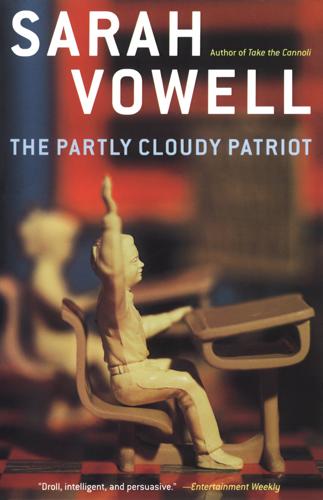
The Partly Cloudy Patriot
by
Sarah Vowell
Published 26 Aug 2002
What we need is a president who is at least twelve kinds of nerd, a nerd messiah to come along every four years, acquire the Secret Service code name Poindexter, install a Revenge of the Nerds screen saver on the Oval Office computer, and one by one decrypt our woes. Rosa Parks, C’est Moi According to Reuters, on January 20, 2001 in Washington, the special guest at the Florida state inaugural ball was introduced by the country singer Larry Gatlin. He said, “In France it was Joan of Arc; in the Crimea it was Florence Nightingale; in the Deep South there was Rosa Parks; in India there was Mother Teresa, and in Florida there was Katherine Harris.” I leave it to my Indian, Crimean, and French colleagues to determine how the Florida secretary of state is or is not similar to Teresa, Florence, or St. Joan. As for Rosa Parks, Katherine Harris can get in line.
…
No rich young white guy has ever gotten anywhere with me comparing himself to Rosa Parks.” Finally, the voice of reason, which of course was heard on a canceled network TV series on cable. Analogies give order to the world—and solidarity. Pointing out how one person is like another is reassuring, less lonely. Maybe those who would compare their personal inconveniences to the epic struggles of history are just looking for company, and who wouldn’t want to be in the company of Rosa Parks? On the other hand, perhaps people who compare themselves to Rosa Parks are simply arrogant, pampered nincompoops with delusions of grandeur who couldn’t tell the difference between a paper cut and a decapitation.
…
To wit: The mayor of Friendship Heights, Maryland, has proposed an outdoor smoking ban because, according to The Washington Post, citizens “with asthma or other illnesses ‘cannot have full access’ to areas where smokers are doing their evil deed. The mayor compares this horrific possibility to Rosa Parks being sent to the back of the bus.” A California dairy farmer protesting the government’s milk pricing system poured milk down a drain in front of TV cameras, claiming that he had to take a stand, “just like Rosa Parks had to take a stand.” A street performer in St. Augustine, Florida, is challenging a city ordinance that bans him from doing his act on the town’s historic St. George Street. The performer’s lawyer told The Florida Times-Union, “Telling these people they can exercise their First Amendment rights somewhere other than on St.

The Power of Habit: Why We Do What We Do in Life and Business
by
Charles Duhigg
Published 1 Jan 2011
There are other recipes for successful social change and hundreds of details that differ between eras and struggles. But understanding how social habits work helps explain why Montgomery and Rosa Parks became the catalyst for a civil rights crusade. It wasn’t inevitable that Parks’s act of rebellion that winter day would result in anything other than her arrest. Then habits intervened, and something amazing occurred. Rosa Parks wasn’t the first black passenger jailed for breaking Montgomery’s bus segregation laws. She wasn’t even the first that year. In 1946, Geneva Johnson had been arrested for talking back to a Montgomery bus driver over seating.8.5 In 1949, Viola White, Katie Wingfield, and two black children were arrested for sitting in the white section and refusing to move.8.6 That same year, two black teenagers visiting from New Jersey—where buses were integrated—were arrested and jailed after breaking the law by sitting next to a white man and a boy.8.7 In 1952, a Montgomery policeman shot and killed a black man when he argued with a bus driver.
…
The city’s Directory of Civil and Social Organizations was almost as thick as its phone book. Every adult, it seemed—particularly every black adult—belonged to some kind of club, church, social group, community center, or neighborhood organization, and often more than one. And within these social networks, Rosa Parks was particularly well known and liked. “Rosa Parks was one of those rare people of whom everyone agreed that she gave more than she got,” Branch wrote in his history of the civil rights movement, Parting the Waters. “Her character represented one of the isolated high blips on the graph of human nature, offsetting a dozen or so sociopaths.”8.9 Parks’s many friendships and affiliations cut across the city’s racial and economic lines.
…
She had what sociologists call “strong ties”—firsthand relationships—with dozens of groups throughout Montgomery that didn’t usually come into contact with one another. “This was absolutely key,” Branch said. “Rosa Parks transcended the social stratifications of the black community and Montgomery as a whole. She was friends with field hands and college professors.” And the power of those friendships became apparent as soon as Parks landed in jail. Rosa Parks called her parents’ home from the police station. She was panicked, and her mother—who had no idea what to do—started going through a mental Rolodex of Parks’s friends, trying to think of someone who might be able to help.

Waging a Good War: A Military History of the Civil Rights Movement, 1954-1968
by
Thomas E. Ricks
Published 3 Oct 2022
Montgomery, 1955–1956 “I have a great belief”: Quoted in Katherine Mellen Charron, Freedom’s Teacher: The Life of Septima Clark (University of North Carolina Press, 2009), 354. “What do you want to do?”: Charron, Freedom’s Teacher, 223. Italics inserted. the session Rosa Parks attended at Highlander: Jeanne Theoharis, The Rebellious Life of Mrs. Rosa Parks (Beacon Press, 2013), 35. Highlander’s teachers found Parks shy: John M. Glen, Highlander: No Ordinary School, 1932–1962 (University Press of Kentucky, 2014), 136. “Had you seen Rosa Parks (the Montgomery sparkplug)”: Charron, Freedom’s Teacher, 235. “Desegregation prove[s] itself by being put in action”: “Rosa Parks Notes, School Desegregation Workshop, Highlander Center, July 24–August 8, 1955,” Civil Rights Movement Archive, crmvet.org/docs/5507park.htm.
…
Septima Clark (left), a trainer at the Highlander School, asked Rosa Parks (right) in August 1955 to think about how to confront segregation. (Library of Congress, Prints & Photographs Division, Visual Materials from the Rosa Parks Papers, LC-DIG-ppmsca-47364) Amzie Moore in his Army uniform during World War II. He came home from the war to become a key figure in organizing the fight for Black freedom in Mississippi, operating for years like a wartime resistance leader. (Wisconsin Historical Society, Image 32464) Rosa Parks being fingerprinted after an arrest for participating in the Montgomery bus boycott (Associated Press / Wikimedia Commons) After Martin Luther King, Jr., emerged as the leader of the Montgomery bus boycott, white authorities harassed him for years.
…
“At Highlander, I found out”: Quoted in Myles Horton, with Judith Kohl and Herbert Kohl, The Long Haul: An Autobiography (Doubleday, 1990), 149–50. She literally was a Sunday school teacher: Douglas Brinkley, Rosa Parks (Viking, 2000), 72. “I was quite tired”: “Mrs. Rosa Parks Reports on Montgomery, Ala., Bus Protest,” Highlander Folk School, March 1956, Civil Rights Movement Archive, crmvet.org/disc/5603_parks_mbb.pdf. none of the four moved: Interview with Rosa Parks, conducted by Blackside, Inc., November 14, 1985, for Eyes on the Prize: America’s Civil Rights Years (1954–1965), Washington University Libraries, Film and Media Archive, Henry Hampton Collection, transcript, repository.wustl.edu/downloads/0v8382275.

Moral Ambition: Stop Wasting Your Talent and Start Making a Difference
by
Bregman, Rutger
Published 9 Mar 2025
‘Are you going to stand up?’ barked the driver. ‘No,’ she said. ‘Well, I’m going to have you arrested,’ he said. ‘You may do that,’ she replied.2 Her name, of course, was Rosa Parks, and her protest prompted a citywide bus boycott, soon supported by the as yet largely unknown Reverend Martin Luther King Jr. Her flat-out refusal in the face of arrest grew into one of the most consequential and well-known moments in US history. But Rosa Parks was much more than the woman-who-wouldn’t-give-up-her-seat. Often portrayed as a kindly seamstress, Parks had long been a committed activist. By the time she got on that bus, she’d been involved with the civil rights movement for years.
…
Male church leaders – including Martin Luther King Jr, who had at first been reluctant – decided to join the boycott. Only then did Rosa Parks take on the role of the demure heroine. She knew she couldn’t come across as too radical, or white Americans would turn against the movement. ‘Strategically,’ a historian later wrote, ‘the success of Parks as the symbol of the boycott turned, in part, on obscuring her longstanding political activity.’7 To this day, many people still think of Rosa Parks as a kindly seamstress – that’s how effective the mythmaking was. Meanwhile, an action group made up of radical nerds was elsewhere working behind the scenes.
…
Here is an inspiring and powerful call to action: why pursuing an altruistic career is not only vital for our shared future but can also bring you deeper personal fulfilment and happiness’ Princess Mabel of Orange-Nassau Contents Prologue: The happiest brain on earth 1.No, you’re not fine just the way you are A model for what you can do with your talents and your time 2.Lower your threshold for taking action On resistance heroes and how contagious moral ambition can be 3.Join a cult (or start your own) Nader’s Raiders, the Quakers, and other outsiders who change the world 4.See winning as your moral duty The Noble Loser’s five illusions and the genius of Rosa Parks 5.Learn to weep over spreadsheets The remarkable tale of the man who hit the wrong button on his remote 6.Enrol at a Hogwarts for do-gooders Visiting one of the most inspiring schools on the planet 7.Find out what the world needs and make it happen What we can learn from pioneers and creators like Jonas Salk and Josephine Cochrane 8.Save a life.
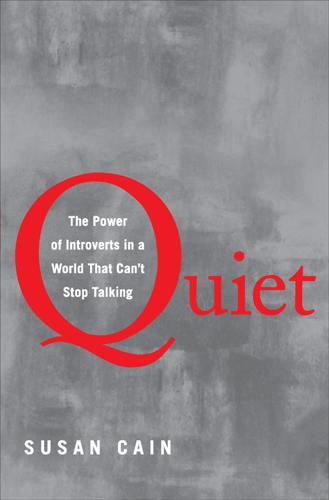
Quiet: The Power of Introverts in a World That Can't Stop Talking
by
Susan Cain
Published 24 Jan 2012
But Grant’s research suggests that in at least one important regard—encouraging employees to take initiative—introverted leaders would do well to go on doing what they do naturally. Extroverted leaders, on the other hand, “may wish to adopt a more reserved, quiet style,” Grant writes. They may want to learn to sit down so that others might stand up. Which is just what a woman named Rosa Parks did naturally. For years before the day in December 1955 when Rosa Parks refused to give up her seat on a Montgomery bus, she worked behind the scenes for the NAACP, even receiving training in nonviolent resistance. Many things had inspired her political commitment. The time the Ku Klux Klan marched in front of her childhood house.
…
During the years I wrote this book, he edited my drafts, sharpened my ideas, made me tea, made me laugh, brought me chocolate, seeded our garden, turned his world upside down so I had time to write, kept our lives colorful and exciting, and got us the hell out of the Berkshires. He also, of course, gave us Sammy and Elishku, who have filled our house with trucks and our hearts with love. Notes INTRODUCTION: THE NORTH AND SOUTH OF TEMPERAMENT 1. Montgomery, Alabama. December 1, 1955: For an excellent biography of Rosa Parks, see Douglas Brinkley, Rosa Parks: A Life (New York: Penguin, 2000). Most of the material in Quiet about Parks is drawn from this work. A note about Parks: Some have questioned the singularity of her actions, pointing out that she’d had plenty of civil rights training before boarding that bus. While this is true, there’s no evidence, according to Brinkley, that Parks acted in a premeditated manner that evening, or even as an activist; she was simply being herself.
…
Until the driver orders her to give her seat to a white passenger. The woman utters a single word that ignites one of the most important civil rights protests of the twentieth century, one word that helps America find its better self. The word is “No.” The driver threatens to have her arrested. “You may do that,” says Rosa Parks. A police officer arrives. He asks Parks why she won’t move. “Why do you all push us around?” she answers simply. “I don’t know,” he says. “But the law is the law, and you’re under arrest.” On the afternoon of her trial and conviction for disorderly conduct, the Montgomery Improvement Association holds a rally for Parks at the Holt Street Baptist Church, in the poorest section of town.
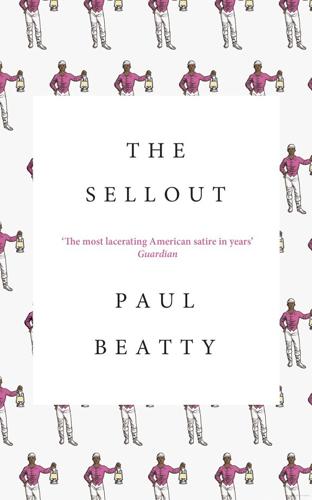
The Sellout: A Novel
by
Paul Beatty
Published 2 Mar 2016
Stevie shrugged and continued to stare at the Polaroid. “The bus here because they lost Rosa Parks’s bus.” “Who lost Rosa Parks’s bus?” “White people. Who the fuck else? Supposedly, every February when schoolkids visit the Rosa Parks Museum, or wherever the fuck the bus is at, the bus they tell the kids is the birthplace of the civil rights movement is a phony. Just some old Birmingham city bus they found in some junkyard. That’s what my sister says, anyway.” “I don’t know.” Cuz took two deep swallows of gin. “What you mean, ‘You don’t know’? You think that after Rosa Parks bitch-slapped white America, some white rednecks going to go out of their way to save the original bus?
…
It wouldn’t be hard to argue that Hominy gave up his seat, not because she was white, but because she was so fucking fine, and that notion had me reassessing the entire civil rights movement. Maybe race had nothing to do with it. Maybe Rosa Parks didn’t give up her seat because she knew the guy to be unapologetically gassy or one of those annoying people who insists on asking what you’re reading, then without prompting tells you what he’s reading, what he wants to read, what he regrets having read, what he tells people he’s read but really hasn’t read. So like those high school white girls who have after-school sex with the burly black athlete in the wood shop, and then cry rape when their fathers find out, maybe Rosa Parks, after the arrest, the endless church rallies, and all the press, had to cry racism, because what was she going to say: “I refused to move because the man asked me what I was reading”?
…
Puffing and passing, and trying to keep your stick from getting dinged up with every California pothole hit and high-as-hell, whoa-dude-is-it-me-or-are-the-caution-lights-getting-shorter? sudden stop. “Incredible bud, dude. Where’d you get this shit?” “I know some Dutch coffee shop owners.” Ten That wintery day in the segregated state of Alabama, when Rosa Parks refused to give up her bus seat to a white man, she became known as the “Mother of the Modern-Day Civil Rights Movement.” Decades later on, a seasonally indeterminate afternoon in a supposedly unsegregated section of Los Angeles, California, Hominy Jenkins couldn’t wait to give up his seat to a white person.

Twitter and Tear Gas: The Power and Fragility of Networked Protest
by
Zeynep Tufekci
Published 14 May 2017
Underneath, a flurry of organizing had been taking place that would become visible to the rest of the world only with the historic boycott. Although many people know the name of Rosa Parks, she was not the first to be arrested for protesting racial segregation on a bus in Montgomery. Earlier that year, in March 1955, a fifteen-year-old girl, Claudette Colvin, was arrested under circumstances almost identical to Rosa Parks’s December arrest: refusing to give up her seat and move to the back of the bus. There were others as well. The head of the Montgomery NAACP chapter, Edgar Nixon, had been looking for a case to legally challenge and protest the segregated bus system in which African American riders were often treated cruelly; some had been shot at for challenging mistreatment.
…
It might come as a surprise to learn that the March on Washington was not the first large-scale civil rights march that year. It was not even the first time King recited the “I Have a Dream” speech, just like Rosa Parks was not the first person to be arrested for resisting segregation; in fact, the 1955 arrest was not even Parks’s first arrest. The civil rights movement was not a quiet, obedient group led by an infallible Martin Luther King any more than Rosa Parks was merely a tired seamstress who wanted to sit down one day. Instead, the movement was a lively band of rebels, united under the umbrella of a cause but also with many differing ideas about how and why they should proceed.
…
Later in this book, you will notice that I often use the U.S. civil rights movement as a point of comparison. I do this for several reasons, not least that it is one of the most studied movements in history. It is also a movement that many of my students are familiar with, thus providing me with a comparative tool, though I tried to make sure to push beyond the typical summary—“Rosa Parks got tired; Martin Luther King, Jr gave a speech”—to show how complex, dynamic, and multilayered this movement was. This choice, of course, is also a limitation. The civil rights movement is far from the only important movement in history, and I do not mean to position this one movement as a benchmark for success or failure.
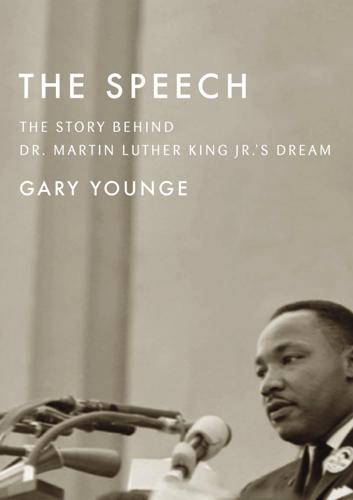
The Speech: The Story Behind Dr. Martin Luther King Jr. S Dream
by
Gary Younge
Published 11 Aug 2013
If a dog is fixed on a black man when that black man is doing nothing but trying to take advantage of what the government says is supposed to be his, then that black man should kill that dog or any two-legged dog who sets the dog on him.” Neither Malcolm X nor the Nation of Islam had been associated with violence beyond rhetoric and internal feuds. But as Lewis has pointed out (see p. 19 above), that didn’t stop their defiant tone from gaining traction. Rosa Parks, an ostensibly demure icon of the movement, met Malcolm X shortly before his assassination in February 1965 and stated afterward that her philosophy was closer to his than to King’s. “Dr. King used to say that black people should receive brutality with love, and I believed that was a goal to work for, but I couldn’t reach that point in my mind at all. ” The reaction of Maya Angelou and her fellow African American émigrés in Ghana to the news that King would lead a march on Washington was scathing precisely because they felt nonviolence had not worked: “All the prayers, sit-ins, sacrifices, jail sentences, humiliation, insults and jibes had not borne out Reverend King’s vision,” wrote Angelou in All God’s Children Need Traveling Shoes.
…
“But you knew how to behave when Strom Thurmond attacked.” Meanwhile, the chauvinism of a movement dominated by males while supported by many women in its ranks was challenged after it transpired that not a single woman would be allowed to take the microphone on the day unless she was singing. Some of the movement’s central figures, including Rosa Parks, Septima Clark, Ella Baker, Daisy Bates, and Diane Nash, were not allowed to march alongside the men. Coretta Scott King and other wives were also diverted to a separate procession on Independence Avenue. Black activist and educator Anna Hedgeman was particularly incensed and challenged the march organizers over the gender imbalance on the platform.
…
Wilkins accused Lewis of “double-crossing the people who had gathered to support this bill.” Lewis retorted: “I’m speaking for my colleagues in SNCC and for the people in the Delta and in the Black Belt. You haven’t been there, Mr. Wilkins. You don’t understand.” Up on stage Rustin delivered a tribute to “Negro women fighters for freedom.” Rosa Parks, Daisy Bates, Prince E. Lee, Diane Nash, and Gloria Richardson were called on to take a bow and say not a word. Nash, listening to the event on the radio (she had decided to rest rather than attend the march), was surprised to hear her name called. Back below the monument the debate over Lewis’s speech continued unabated.

Essentialism: The Disciplined Pursuit of Less
by
Greg McKeown
Published 14 Apr 2014
Thus an essential intent. 11. DARE 1. Juan Williams, Eyes on the Prize: America’s Civil Rights Years, 1954–1965 (New York: Penguin Books, 2002), 66. 2. Mark Feeney, “Rosa Parks, Civil Rights Icon, Dead at 92,” Boston Globe, October 25, 2005. 3. Donnie Williams and Wayne Greenhaw, The Thunder of Angels: The Montgomery Bus Boycott and the People who Broke the Back of Jim Crow (Chicago: Chicago Review Press, 2005), 48. 4. “Civil Rights Icon Rosa Parks Dies at 92,” CNN, October 25, 2005. 5. This story is shared in a few different places, but this account is taken from my interview with Cynthia Covey in 2012. 6.
…
Yet it is worth the effort because only with real clarity of purpose can people, teams, and organizations fully mobilize and achieve something truly excellent. CHAPTER 11 DARE The Power of a Graceful “No” COURAGE IS GRACE UNDER PRESSURE. —Ernest Hemingway The right “no” spoken at the right time can change the course of history. In just one example of many, Rosa Parks’s quiet but resolute refusal to give up her seat on a segregated Montgomery bus at exactly the right moment coalesced into forces that propelled the civil rights movement. As Parks recalls, “When [the bus driver] saw me still sitting, he asked if I was going to stand up, and I said, ‘No, I’m not.’ ”1 Contrary to popular belief, her courageous “no” did not grow out of a particularly assertive tendency or personality in general.
…
She knew, even as she was being arrested, that “it was the very last time that I would ever ride in humiliation of this kind.”4 Avoiding that humiliation was worth the risk of incarceration. Indeed, to her, it was essential. It is true that we are (hopefully) unlikely to find ourselves facing a situation like the one faced by Rosa Parks. Yet we can be inspired by her. We can think of her when we need the courage to dare to say no. We can remember her strength of conviction when we need to stand our ground in the face of social pressure to capitulate to the nonessential. Have you ever felt a tension between what you felt was right and what someone was pressuring you to do?
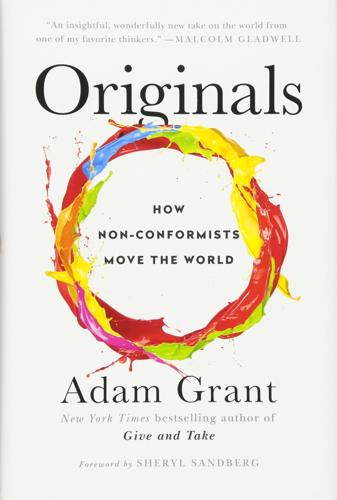
Originals: How Non-Conformists Move the World
by
Adam Grant
Published 2 Feb 2016
George Washington had been focused on managing his wheat, flour, fishing, and horse-breeding businesses, joining the cause only after Adams nominated him as commander in chief of the army. “I have used every endeavor in my power to avoid it,” Washington wrote. Nearly two centuries later, Martin Luther King, Jr., was apprehensive about leading the civil rights movement; his dream was to be a pastor and a college president. In 1955, after Rosa Parks was tried for refusing to give up her seat at the front of a bus, a group of civil rights activists gathered to discuss their response. They agreed to form the Montgomery Improvement Association and launch a bus boycott, and one of the attendees nominated King for the presidency. “It had happened so quickly that I did not even have time to think it through.
…
The march had been announced to the press two months earlier; King knew it would be a monumental event. Along with the media coverage, a crowd of at least a hundred thousand was expected, and King had a hand in recruiting a number of famous figures to attend in support. The audience included civil rights pioneers Rosa Parks and Jackie Robinson, actors Marlon Brando and Sidney Poitier, and singers Harry Belafonte and Bob Dylan. With relatively little time to prepare for his closing speech, it would have been natural for King to begin drafting it immediately. Since each speaker was initially given a time limit of five minutes, he needed to be particularly careful in choosing his words.
…
You’ll find out what determines whether children rebel in a constructive or destructive direction, why it’s a mistake to tell children not to cheat, how we praise them ineffectively and read them the wrong books, and what we can learn from the parents of individuals who risked their lives to rescue Jews during the Holocaust. Born to Rebel In 1944, more than a decade before Rosa Parks made her heroic stand on a Montgomery bus, Jackie Robinson, then an army lieutenant, was court-martialed for refusing to sit at the back of a bus. The driver “shouted that if I didn’t move to the rear of the bus he would cause me plenty of trouble,” Robinson recounted. “I told him hotly that I couldn’t care less about his causing me trouble.”
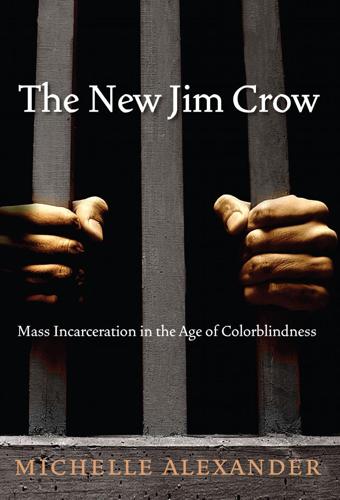
The New Jim Crow: Mass Incarceration in the Age of Colorblindness
by
Michelle Alexander
Published 24 Nov 2011
Since the days when abolitionists struggled to eradicate slavery, racial justice advocates have gone to great lengths to identify black people who defy racial stereotypes, and they have exercised considerable message discipline, telling only those stories of racial injustice that will evoke sympathy among whites. A prime example is the Rosa Parks story. Rosa Parks was not the first person to refuse to give up her seat on a segregated bus in Montgomery, Alabama. Civil rights advocates considered and rejected two other black women as plaintiffs when planning a test case challenging segregation practices: Claudette Colvin and Mary Louise Smith. Both of them were arrested for refusing to give up their seats on Montgomery’s segregated buses, just months before Rosa Parks refused to budge. Colvin was fifteen years old when she defied segregation laws. Her case attracted national attention, but civil rights advocates declined to use her as a plaintiff because she got pregnant by an older man shortly after her arrest.
…
Likewise, they decided not to use Mary Louise Smith as a plaintiff because her father was rumored to be an alcoholic. It was understood that, in any effort to challenge racial discrimination, the litigant—and even the litigant’s family—had to be above reproach and free from every negative trait that could be used as a justification for unequal treatment. Rosa Parks, in this regard, was a dream come true. She was, in the words of Jo Ann Gibson Robinson (another key figure in the Montgomery Bus Boycott), a “medium-sized, cultured mulatto woman; a civic and religious worker; quiet, unassuming, and pleasant in manner and appearance; dignified and reserved; of high morals and strong character.”7 No one doubted that Parks was the perfect symbol for the movement to integrate public transportation in Montgomery.
…
.; Bureau of Statistics; report in impact of bias in criminal justice system; and street crime Justice Policy Institute Karlan, Pamela Kennedy, Justice Anthony Kennedy, John F. Kerlikowske, Gil Kilty, Keith King, Martin Luther King, Martin Luther, Jr.; and affirmative action; call for complete restructuring of society; and civil rights lawyers/legal cases; on colorblindness and indifference; and human rights approach; and Poor People’s Movement; and Rosa Parks Klarman, Michael Kraska, Peter Ku Klux Klan Ku Klux Klan Acts Lambright, Nshombi Law & Order (television) law enforcement. See drug-law enforcement and racial discrimination; police/police departments and drug-law enforcement Lawrence, Charles Lawyers’ Committee for Civil Rights of the San Francisco Bay Area Leadership Conference on Civil Rights Lee, William Levine, Harry liberal philosophy of race relations (Reconstruction era) Lincoln, Abraham Lockyer v.

Doppelganger: A Trip Into the Mirror World
by
Naomi Klein
Published 11 Sep 2023
* * * Those conversations are obviously anathema on the right, Taylor notes, but they are also “evaded even by some liberals afraid of being tagged as favoring ‘big government.’” And so, while Wolf was cosplaying Rosa Parks, some of her newfound fellow warriors in the fight for “freedom” were busily banning books about the precise history they were all pilfering, including a little illustrated book called I Am Rosa Parks, which made it onto a Pennsylvania school board’s banned book list. In her dozens and dozens of media appearances on right-wing outlets that I have listened to, I have never heard Wolf speak out against the escalating book bans around the country, even as she laments her own deplatforming as a member of the “shadow banned.”
…
Jim Crow was indeed a tyrannical system designed to maintain Black people’s status as second-class citizens. By invoking lunch counters, and referencing earlier moments in U.S. history with “forced separate accommodations” and “discriminatory rules,” Wolf was brashly putting herself in the same league as the Greensboro Four, as well as Rosa Parks, who in 1955 famously refused to give up her seat to a white passenger on a bus in Montgomery, Alabama. (Wolf is enough of an admirer that she named her daughter after her.) Later she would write that living in New York State during Covid had been “as if we were all living under Jim Crow laws.” Racial Role-Playing These historical invocations were not anomalies.
…
Whether in New York or Sydney, Paris or Rome, white people—overwhelmingly in the majority as protesters and protest leaders—pronounced themselves to be part of “a new civil rights movement” because they were victims of a new human hierarchy in which they were “second-class citizens” and faced “medical apartheid.” Some held signs that said MANDATE = SLAVERY. In September 2021, a teaching assistant at an elementary school in Newberg, Oregon, went so far as to protest her district’s vaccine mandate by showing up for work in blackface. “I am representing Rosa Parks,” she told a talk-show host. Taken together, this movement has claimed, at various times, to be standing up to pretty much all the crimes that have been perpetrated against racial and religious minorities since the Crusades: slavery, genocide, the Holocaust, Jim Crow, apartheid, and more. One of the glowing influencers who I follow, for instance, said she is tired of fighting for her “right to breathe”—a reference to her refusal to wear a mask in stores when they were mandated.
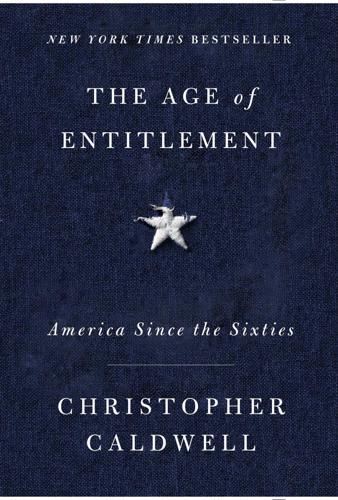
The Age of Entitlement: America Since the Sixties
by
Christopher Caldwell
Published 21 Jan 2020
The Yale Law Journal had already leveled a similar accusation: that the National Association for the Advancement of Colored People had been allowed to take up a role in the various civil rights cases as a “private attorney general.” The NAACP not only staged events, it scripted them. The plaintiffs it hand-picked to carry them out were chosen for their sympathy and skill. One example is Rosa Parks. Over decades, Black History Month has taught millions of schoolchildren to think of her as a “tired seamstress,” whose need to rest her weary legs in the white section of a Montgomery, Alabama, city bus unleashed a storm of spontaneous protest. But she was considerably more than that. Five months before the Montgomery bus boycott began, she had attended the Highlander Folk School in New Market, Tennessee, an academy that the Congress of Industrial Organizations had set up for training social agitators.
…
It was fair to say that ethnic studies had taken over not just college curricula but even primary and secondary school history teaching. In 2008, education professors from Stanford and the University of Maryland asked 2,000 eleventh and twelfth graders to name the ten most significant Americans who had never been president. Three standbys of Black History Month—Martin Luther King, the anti-segregationist protester Rosa Parks, and the escaped slave Harriet Tubman—ranked 1, 2, and 3, far ahead of (for example) Benjamin Franklin, Emily Dickinson, Mark Twain, Thomas Edison, and Henry Ford. The exemplary destruction of Al Campanis At the start of the 1987 baseball season, Ted Koppel, the host of ABC’s Nightline, invited Los Angeles Dodgers executive Al Campanis to discuss the fortieth anniversary of Jackie Robinson’s rookie season as the first black player in the major leagues.
…
Black Lives Matter reconnected to certain realities of the 1960s civil rights movement that had been buried under official celebrations of the movement as pacifistic, harmonious, and Christian. Ta-Nehisi Coates insisted on his own atheism, and Travis Gosa stressed that Black Lives Matter was “atheist or at least non-denominational.” Black Lives Matter arose amid a revival of the black power or even (in Coates’s case) the Black Panther tendency. As Jeanne Theoharis, the biographer of Rosa Parks, showed, this history was a bigger part of the 1960s civil rights movement than twenty-first-century Americans of any race were comfortable acknowledging. Theoharis chastised Atlanta mayor Kasim Reed for saying, amid the 2016 protests, “Dr. King would never take [over] a freeway.” What did Mayor Reed think the Selma march was?
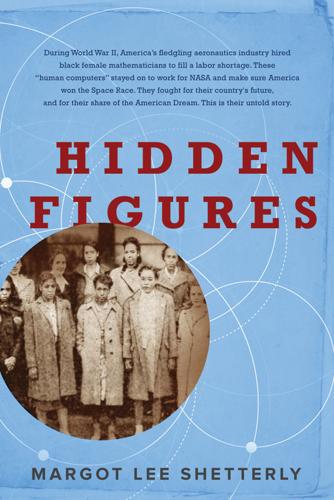
Hidden Figures
by
Margot Lee Shetterly
Published 11 Aug 2016
Philip Randolph, implacable in his advocacy of voting rights and economic equality, was actively working with younger organizers, principally the minister of a Montgomery, Alabama, church named Martin Luther King Jr. King and a fellow pastor named Ralph Abernathy had helped organize a boycott of the city buses after a fifteen-year-old student named Claudette Colvin and Rosa Parks, a forty-two-year-old seamstress, were both hauled off to jail for refusing to yield their seats in the “white” section of the bus. As with the legal case of Irene Morgan, the woman arrested in Virginia’s Gloucester County in 1946 for the same infraction, the battle over integration on Montgomery buses eventually won a hearing in front of the Supreme Court.
…
Like a match on dry kindling, the sit-ins set aflame Negroes’ smoldering, long-deferred dream of equality with a speed and intensity that took even the black community by surprise. Hampton Institute was the first school outside of North Carolina to organize a sit-in. On the campus, many students had come into contact with one of the early icons of a mobilization that seemed to be gaining national momentum. Five years earlier, Rosa Parks, the Montgomery, Alabama, seamstress and NAACP member, refused to yield her seat on a city bus to a white man, galvanizing the bus boycott led by Martin Luther King Jr. and Ralph Abernathy. A ferocious backlash against Parks ensued: she received death threats, and both she and her husband, Raymond, were blacklisted from employment in Montgomery.
…
Alexander, This New Ocean: A History of Project Mercury (Washington, DC: NASA, 1989), 256. 201 three hundred had joined the demonstration: “The Greensboro Sit-In,” History.com, http://www.history.com/topics/black-history/the-greensboro-sit-in 201 “Dear Mom and Dad”: John “Rover” Jordan, “This Is Portsmouth,” Norfolk Journal and Guide, June 8, 1963. 202 offering her a job as a hostess: Dr. William R. Harvey, “Hampton University and Mrs. Rosa Parks,” Daily Press, February 23, 2013. 202 seven hundred: Arriana McLymore, “A Silenced History; Hampton’s Legacy of Student Protests,” Hampton Script, November 6, 2015. 202 until the owners shut down their establishments: “Hampton ‘Sit-down’: Students Seek Service; 5 & 10 Counter Closes,” Norfolk Journal and Guide, February 20, 1960. 202 five hundred students staged a peaceful protest: Jimmy Knight, “Hamptonians Vow: Jail Will Not Stop Student Protests,” Norfolk Journal and Guide, March 5, 1960. 202 “We want to be treated as American citizens”: Ibid. 202 walking door-to-door in black neighborhoods: Christine Darden, personal interview, April 30, 2012. 203 alive, breathless even: Hammond interview. 203 the astronauts were contributing to the students’ organizing activities: Ibid.
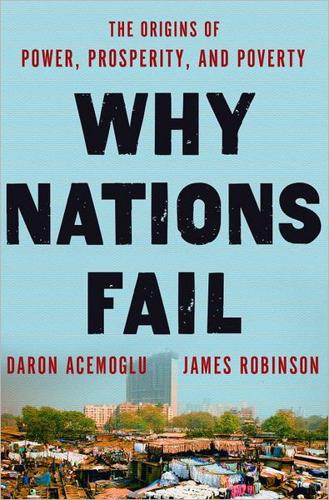
Why Nations Fail: The Origins of Power, Prosperity, and Poverty
by
Daron Acemoglu
and
James Robinson
Published 20 Mar 2012
They noted in their report: We received a call upon arrival the bus operator said he had a colored female sitting in the white section of the bus, and would not move back. We … also saw her. The bus operator signed a warrant for her. Rosa Parks (cf) was charged with chapter 6 section 11 of the Montgomery City Code. Rosa Parks’s offense was to sit in a section of the Cleveland Avenue bus reserved for whites, a crime under Alabama’s Jim Crow laws. Parks was fined ten dollars in addition to court fees of four dollars. Rosa Parks wasn’t just anybody. She was already the secretary of the Montgomery chapter of the National Association for the Advancement of Colored People, the NAACP, which had long been struggling to change the institutions of the U.S.
…
Noncreative destruction: abandoned Hasting railway station on the way to Bo in Sierra Leone © Matt Stephenson: www.itsayshere.org Extractive institutions today: children working in an Uzbek cotton field Environmental Justice Foundation, www.ejfoundation.org Breaking a mold: three Tswana chiefs on their way to London Photograph by Willoughby, courtesy of Botswana National Archives & Records Services Breaking another mold: Rosa Parks challenges extractive institutions in the U.S. south The Granger Collection, NY Extractive institutions devour their children: the Chinese Cultural Revolution vs. “degenerate intellectuals” Weng Rulan, 1967, IISH Collection, International Institute of Social History (Amsterdam) 9. REVERSING DEVELOPMENT SPICE AND GENOCIDE THE MOLUCCAN ARCHIPELAGO in modern Indonesia is made up of three groups of islands.
…
South were different from the colonial institutions of pre-independence Botswana. The type of critical juncture that started the process of their downfall was also different but shared several commonalities. Starting in the 1940s, those who bore the brunt of the discrimination and the extractive institutions in the South, people such as Rosa Parks, started to become much better organized in their fight against them. At the same time, the U.S. Supreme Court and the federal government finally began to intervene systematically to reform the extractive institutions in the South. Thus a main factor creating a critical juncture for change in the South was the empowerment of black Americans there and the end of the unchallenged domination of the southern elites.

Eastern USA
by
Lonely Planet
ALABAMA FACTS »Nickname The Heart of Dixie »Population 4.7 million »Area 52,419 sq miles »Capital city Montgomery (population 224,119) »Other cities Birmingham (population 212,237) »Sales tax 4%, but up to 11% with local taxes »Birthplace of Author Helen Keller (1880–1968), civil rights activist Rosa Parks (1913–2005), musician Hank Williams (1923–53) »Home of US Space & Rocket Center »Politics GOP stronghold – Alabama hasn’t voted democratic since 1976 »Famous for Rosa Parks and the Civil Rights movement »Bitterest rivalry University of Alabama vs Auburn University »Driving distances Montgomery to Birmingham 91 miles, Mobile to Dauphin Island 38 miles History Alabama was among the first states to secede in the Civil War.
…
Independence National Historic Park Known as America’s most historic square mile, highlights include the Liberty Bell and Independence Hall, where the founding fathers signed the Constitution (Click here) Boston’s Freedom Trail Walk by Paul Revere’s former home, the graveyard where 18th-century patriots lie buried, and 14 other famous Revolutionary sites along the 2.5-mile path (Click here) Henry Ford Museum/Greenfield Village The adjacent museums hold history’s greatest hits: Rosa Parks’ bus, Lincoln’s assassination chair, the Wright Brothers’ airplane workshop and more (Click here) Washington, DC Visit the theater where John Wilkes Booth shot America’s favorite president, the steps of Lincoln Memorial where Martin Luther King Jr gave his ‘I have a dream’ speech and the infamous Watergate Hotel (Click here) Vicksburg It’s ground zero for Civil War buffs, with a 16-mile driving tour through the Mississippi area that General Grant besieged for 47 days (Click here) Nightlife When the sun goes down, the music cranks up across the region, from swanky urban clubs to beer-and-a-shot juke joints.
…
It’s not far now to New Orleans, where Katrina be damned, you can still hear live jazz, drink Sazerac cocktails, consult with a voodoo priestess or even ride a steamboat on the Mississippi River. Begin journeying back east for week three. Wheel along the Gulf Coast to the azalea-lined boulevards of Mobile (mo- beel), then inland to Montgomery, where museums honor civil rights pioneers like Rosa Parks, who refused to give up her seat to a white man on a city bus. Fall under the spell of Savannah’s live oaks and Charleston’s pastel architecture and decadent food. Take your pick of Durham or Chapel Hill, side-by-side university towns offering groovy nightlife. Begin week four brushing up on your history in Virginia.
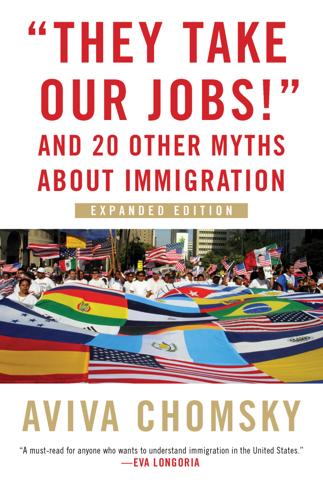
"They Take Our Jobs!": And 20 Other Myths About Immigration
by
Aviva Chomsky
Published 23 Apr 2018
MYTH 20 IF PEOPLE BREAK OUR LAWS BY IMMIGRATING ILLEGALLY, THEY ARE CRIMINALS AND SHOULD BE DEPORTED As we’ve seen, the history of our country has included many laws that today look unjust and discriminatory. The original laws of this country upheld slavery and limited citizenship to white men. Later laws justified lynching and segregation. When we look back at history, we generally honor the people who broke those laws. Rosa Parks broke the law when she refused to move to the back of the bus. Harriet Tubman broke the law when she fled slavery and helped to create the Underground Railroad. Immigration laws are very different from the laws that we usually have in mind when we talk about people breaking the law. “Breaking the law” conjures up images of assaults, thefts, murders—violations of laws that were created to protect people from harm.
…
Some undocumented immigrants crossed the border “illegally,” but many in fact obtained legal permission to cross the border and entered the country on visas that allowed them to stay temporarily. When the visa expired, they became “illegal” overnight. Some citizens wonder why immigrants don’t simply “follow the rules” and do the appropriate paperwork, or renew their visas, or become citizens, thus becoming “legal.” The reason they don’t is the same as the reason that Rosa Parks didn’t sit “legally” in the front of the bus, or Harriet Tubman didn’t “legally” emancipate herself from slavery: because the law was designed not to allow certain groups of people to have the rights that others enjoy. “If I had the resources and the connections to apply to come legally,” one undocumented Mexican immigrant explained, “I wouldn’t need to leave Mexico to work in this country.”
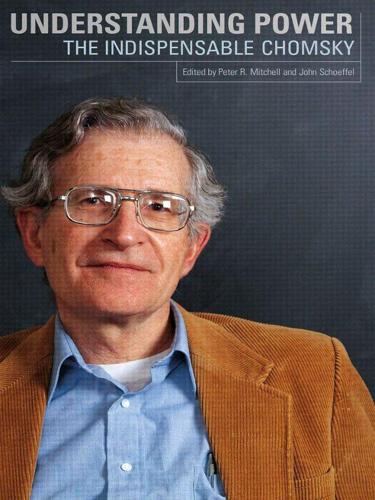
Understanding Power
by
Noam Chomsky
Published 26 Jul 2010
So it’s necessary to distort history and make it look as if Great Men did everything—that’s part of how you teach people they can’t do anything, they’re helpless, they just have to wait for some Great Man to come along and do it for them. But just take a look at the Civil Rights Movement in the United States, for example—take, say, Rosa Parks [who triggered the 1955 Montgomery Bus Boycott protesting racial segregation]. I mean, the story about Rosa Parks is, this courageous black woman suddenly decided, “I’ve had enough, I’m not going to sit in the back of the bus.” Well, that’s sort of half true—but only half. Rosa Parks came out of a community, a well-organized community, which in fact had Communist Party roots if you trace it back, things like Highlander School [a Tennessee school for educating political organizers] and so on. 6 But it was a community of people who were working together and had decided on a plan for breaking through the system of segregation—Rosa Parks was just an agent of that plan.
…
Rosa Parks came out of a community, a well-organized community, which in fact had Communist Party roots if you trace it back, things like Highlander School [a Tennessee school for educating political organizers] and so on. 6 But it was a community of people who were working together and had decided on a plan for breaking through the system of segregation—Rosa Parks was just an agent of that plan. Okay, that’s all out of history. What’s in history is, one person had the courage to do something—which she did. But not on her own. Nobody does anything on their own. Rosa Parks came out of an organized community of committed people, people who’d been working together for change for a very long time. And that’s how it always works. The same was true of Martin Luther King: he was able to appear and give public speeches because S.N.C.C. workers and Freedom Riders and others had prepared the ground—and taken a brutal beating for it.
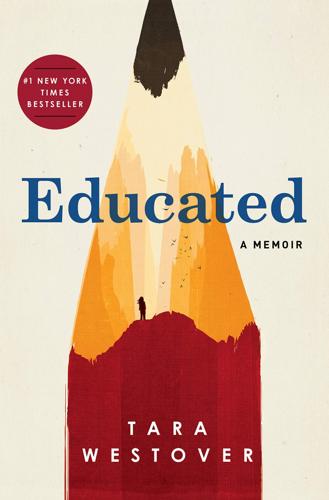
Educated
by
Tara Westover
Published 20 Feb 2018
Police. Firefighters turning hoses on young men. Dr. Kimball recited names I’d never heard. He began with Rosa Parks. An image appeared of a policeman pressing a woman’s finger into an ink sponge. Dr. Kimball said she’d taken a seat on a bus. I understood him as saying she had stolen the seat, although it seemed an odd thing to steal. Her image was replaced by another, of a black boy in a white shirt, tie and round-brimmed hat. I didn’t hear his story. I was still wondering at Rosa Parks, and how someone could steal a bus seat. Then the image was of a corpse and I heard Dr. Kimball say, “They pulled his body from the river.”
…
Shawn had meant it to humiliate me, to lock me in time, into an old idea of myself. But far from fixing me in place, that word transported me. Every time he said it—“Hey Nigger, raise the boom” or “Fetch me a level, Nigger”—I returned to the university, to that auditorium, where I had watched human history unfold and wondered at my place in it. The stories of Emmett Till, Rosa Parks and Martin Luther King were called to my mind every time Shawn shouted, “Nigger, move to the next row.” I saw their faces superimposed on every purlin Shawn welded into place that summer, so that by the end of it, I had finally begun to grasp something that should have been immediately apparent: that someone had opposed the great march toward equality; someone had been the person from whom freedom had to be wrested.

So You've Been Publicly Shamed
by
Jon Ronson
Published 9 Mar 2015
‘It’s satisfying to be able to say, “OK, let’s make a racist tweet by a senior IAC employee count this time.” And it did. I’d do it again.’ Her destruction was justified, Sam Biddle was saying, because Justine was a racist, and because attacking her was punching up. They were cutting down a member of the media elite, continuing the civil rights tradition that started with Rosa Parks, the hitherto silenced underdogs shaming into submission the powerful racist. But I didn’t think any of those things was true. If punching Justine Sacco was ever punching up - and it didn’t seem so to me, given that she was an unknown PR woman with 170 Twitter followers - the punching only intensified as she plummeted to the ground.
…
Maybe - as my friend the documentary maker Adam Curtis emailed me - they’re turning social media into ‘a giant echo chamber where what we believe is constantly reinforced by people who believe the same thing’. We express our opinion that Justine Sacco is a monster. We are instantly congratulated for this - for basically being Rosa Parks. We make the on-the-spot decision to carry on believing it. ‘The tech-utopians like the people in Wired present this as a new kind of democracy,’ Adam’s email continued. ‘It isn’t. It’s the opposite. It locks people off in the world they started with and prevents them from finding out anything different.
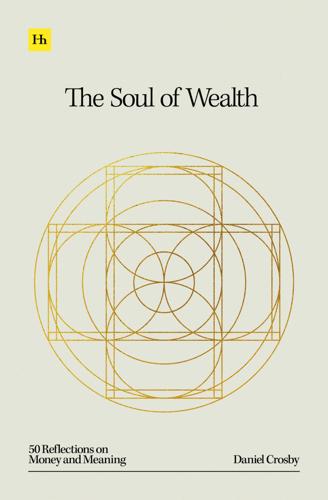
The Soul of Wealth
by
Daniel Crosby
Published 19 Sep 2024
As an Alabamian, I have long marveled at the stories of civil rights leaders who spearheaded vital transformations in my Sweet Home. Since I’m also a financial history enthusiast, I’m especially interested in how Southern and other leaders throughout time have used economic means to bring about social change. The Montgomery Bus Boycott, sparked by Rosa Parks’ refusal to cede her seat, used both personal bravery and economic pressures to catalyze change. Often first encountered by students in high school social studies classes as a poignant moment in the civil rights movement, the boycott’s economic backstory is frequently overlooked. In December 1955, Parks was arrested in Montgomery for violating segregation laws.
…
However often it happens where you live (it’s three to five years in most countries), you likely do the time-consuming work of getting to know the various candidates, exploring their policies, and then casting a vote for the candidate who best embodies your most deeply held convictions. But each day, we encounter myriad chances to do the very same thing with our spending choices—an opportunity that most of us let slip by with little thought. Here’s an easy framework you can put to work to align your spending with your values. Maybe you won’t change the world as Rosa Parks did, but by taking small financial steps, you can move closer to living in the world you wish to see. Realize that you’re voting: When you spend, you are voting—whether you know it or not. I don’t think people fully understand this. Rather, we tend to click ‘add to cart’ without giving it much thought.
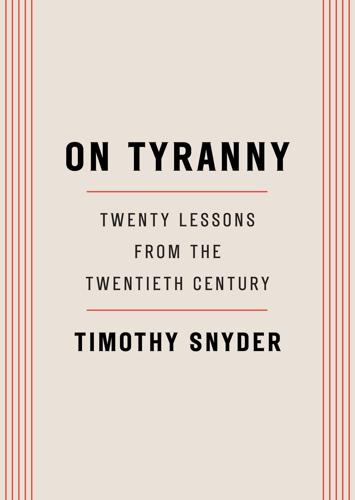
On Tyranny: Twenty Lessons From the Twentieth Century
by
Timothy Snyder
Published 14 Sep 2017
Other forces were at work besides conformism. But without the conformists, the great atrocities would have been impossible. 8 Stand out. Someone has to. It is easy to follow along. It can feel strange to do or say something different. But without that unease, there is no freedom. Remember Rosa Parks. The moment you set an example, the spell of the status quo is broken, and others will follow. After the Second World War, Europeans, Americans, and others created myths of righteous resistance to Hitler. In the 1930s, however, the dominant attitudes had been accommodation and admiration. By 1940 most Europeans had made their peace with the seemingly irresistible power of Nazi Germany.
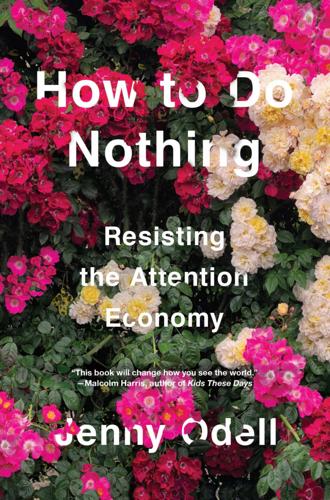
How to Do Nothing
by
Jenny Odell
Published 8 Apr 2019
While it may seem at first like refusal is a reaction, the decision to actually refuse—not once, not twice, but perpetually until things have changed—means the development of and adherence to individual and collective commitments from which our actions proceed. In the history of activism, even things that seemed like reactions were often planned actions. For example, as William T. Martin Riches reminds us in his accounting of the Montgomery bus boycott, Rosa Parks was “acting, not reacting” when she refused to get up from her seat. She was already involved with activist organizations, having been trained at the Highlander Folk School, which produced many important figures in the movement.40 The actual play-by-play of the bus boycott is a reminder that meaningful acts of refusal have come not directly from fear, anger, and hysteria, but rather from the clarity and attention that makes organizing possible
…
Tillie Olsen, “The Strike,” Writing Red: An Anthology of American Women Writers, 1930–1940, ed. Charlotte Nekola and Paula Rabinowitz (New Yoek City University of New York: The Feminist Press, 1987), 250. 40. William T. Martin Riches, The Civil Rights Movement: Struggle and Resistance (New York: St. Martin’s Press, 1997), 43. 41. Jeanne Theoharis, The Rebellious Life of Mrs. Rosa Parks (Boston: Beacon Press, 2015), 155. 42. Navia, 23. 43. Eugene E. Pfaff, Jr., Keep on Walkin’, Keep on Talkin’: An Oral History of the Greensboro Civil Rights Movememnt (Greensboro, NC: Tudor, 2011), 178. 44. Ibid, 108. 45. Stu Schmill, “Policies, Principles and Protests,” MIT Admissions, February 22, 2018: https://mitadmissions.org/blogs/entry/policies-principles-and-protests/. 46.
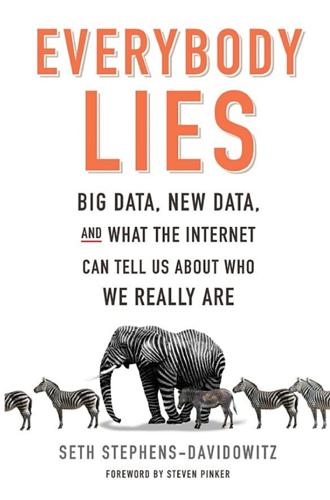
Everybody Lies: Big Data, New Data, and What the Internet Can Tell Us About Who We Really Are
by
Seth Stephens-Davidowitz
Published 8 May 2017
They could then see if certain phrases were significantly more likely to be used by Democrats or Republicans. Some were indeed. Here are a few examples in each category. PHRASES USED FAR MORE BY DEMOCRATS PHRASES USED FAR MORE BY REPUBLICANS Estate tax Death tax Privatize social security Reform social security Rosa Parks Saddam Hussein Workers rights Private property rights Poor people Government spending What explains these differences in language? Sometimes Democrats and Republicans use different phrasing to describe the same concept. In 2005, Republicans tried to cut the federal inheritance tax.
…
Similarly, Republicans tried to move Social Security into individual retirement accounts. To Republicans, this was a “reform.” To Democrats, this was a more dangerous-sounding “privatization.” Sometimes differences in language are a question of emphasis. Republicans and Democrats presumably both have great respect for Rosa Parks, the civil rights hero. But Democrats talked about her more frequently. Likewise, Democrats and Republicans presumably both think that Saddam Hussein, the former leader of Iraq, was an evil dictator. But Republicans repeatedly mentioned him in their attempt to justify the Iraq War. Similarly, “workers’ rights” and concern for “poor people” are core principles of the Democratic Party.
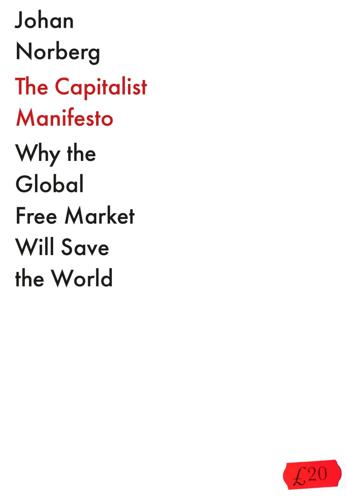
The Capitalist Manifesto
by
Johan Norberg
Published 14 Jun 2023
In an empirical study of seventy countries, economists Niclas Berggren and Therese Nilsson document that economic freedom is positively correlated with tolerance of other ethnic groups and gay people and with the belief that it is important to teach children to be tolerant.12 Everyone knows about the segregation on buses, trams and trains in the American South, until Rosa Parks and the civil rights movement aroused public anger about it in the 1950s, and I thought it had always been so until I read the African-American economist Thomas Sowell. He has showed that railroads, streetcars and buses in the South did not engage in systematic race discrimination until the end of the nineteenth century.
…
Segregation would alienate consumers, demand larger wagons and force the staff to conduct an unpleasant policing task. The Southern states introduced racist Jim Crow laws because they were outraged that greedy capitalists only thought of money and refused to discriminate against black people. In Montgomery, Alabama, where Rosa Parks boarded the bus, segregation was first enacted in 1900. Companies lobbied against the racist laws, challenged them in court and often delayed them by refusing to enforce them. Alabama and other Southern states responded by arresting and fining employees who did not uphold discrimination and by threatening the directors with imprisonment.13 I have myself witnessed how market forces are breaking down the caste system in India.
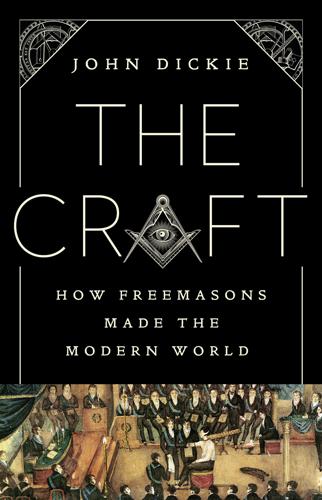
The Craft: How Freemasons Made the Modern World
by
John Dickie
Published 3 Aug 2020
‘Testimonial Dinner’ in Washington DC, 1966, to mark Thurgood Marshall’s appointment as a Thirty-third Degree Prince Hall Freemason. Programme for the evening kindly supplied to the author by Ken Collins. Rosa Parks’ Eastern Star documentation can be accessed online via the Library of Congress site: https://www.loc.gov/resource/mss85943.001520/?sp=1, viewed 24 May 2019. I would like to thank James R. Morgan III, a relative of Rosa Parks’, for the information about her Masonic father in a personal communication. Information on the Prince Hall Temple in Jackson: https://issuu.com/visitjacksonms/docs/2014_civilrightsdrivingtourweb, consulted 24 May 2019.
…
The theme of the evening was ‘Thurgood Marshall: Symbol of Change’. Thurgood Marshall (1908–1993): Prince Hall Freemason and champion of civil rights. (The Prince Hall Brother in the hat is unidentified.) Down in Alabama, the secretary of the NAACP chapter in Montgomery was also a member of a Masonic organisation. Rosa Parks is now hailed as the mother of the civil rights movement, and held up as a role model to children far beyond the United States. In December 1955, the prim, bespectacled Parks famously triggered the Montgomery bus boycott by being arrested for refusing to give up her seat to a white passenger. She was the daughter and grand-daughter of Prince Hall Masons, and an active member of the Order of the Eastern Star–the female adjunct to Freemasonry.

Stephen Fry in America
by
Stephen Fry
Published 1 Jan 2008
* * * ALABAMA KEY FACTS Abbreviation: AL Nickname: The Yellowhammer State, The Heart of Dixie Capital: Montgomery Flower: Camellia Tree: Longleaf pine Bird: Yellowhammer Amphibian: Red Hills salamander Motto: Audemus jura nostra defendere (‘We dare to defend our rights’) Well-known residents and natives: Rosa Parks, Condoleezza Rice, Zelda Fitzgerald, Helen Keller, Truman Capote, Harper Lee, Walker Percy, Jimmy ‘Wikipedia’ Wales, Tallulah Bankhead, Dean Jones, John Badham, Fred Thompson, Courteney Cox, Hank Williams, Emmylou Harris, Tammy Wynette, Lionel Hampton, Nat King Cole, Wilson Pickett, Lionel Richie, Bobby Goldsboro, Dinah Washington, Jimmy Buffet, Percy Sledge, Jesse Owens, Joe Louis, Willie Mays, Carl Lewis
…
Not a replica of the bicycle shop, the actual bicycle shop itself, transported brick by brick, pane by pane. Thus within one small area one can commune with the birthplace of recorded sound, the light bulb, the aeroplane and the motor car. There is more besides: there are small dry-goods stores, Robert Frost’s house, Rosa Park’s bus, the theatre seat and limousine in which Lincoln and JFK were shot, models of aeroplane and motor car and home interiors from the ages. The museum, known as The Henry Ford, is fantastically popular and successful: it is hard not to note the melancholy contrast between it and its founding corporation.
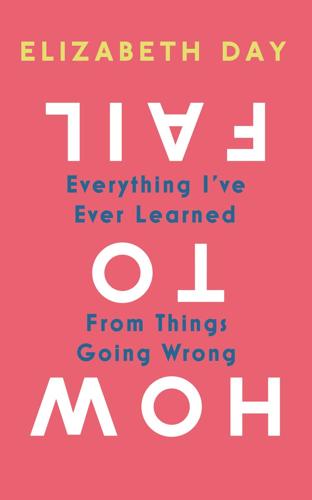
How to Fail: Everything I’ve Ever Learned From Things Going Wrong
by
Elizabeth Day
Published 3 Apr 2019
It is the social unacceptability of women’s anger that has forced us to tamp down our rage and transmute it into something more palatable. In Rebecca Traister’s seminal book, Good and Mad: The Revolutionary Power of Women’s Anger, she writes about the iconography surrounding Rosa Parks, the woman who refused to give up her seat to a white man on an Alabama bus in 1955, thereby helping to ignite the civil rights movement in the United States. Traister writes: ‘We aren’t taught that Rosa Parks, the perfectly demure woman whose refusal to give up her seat kicked off the Montgomery Bus Boycott in 1955, was a fervent anti-rape activist who had once told a would-be attacker that she would rather die than be raped by him and who, at ten years old, threatened by a white boy, picked up a piece of brick and drew it back to strike him if he approached.

Please Don't Sit on My Bed in Your Outside Clothes: Essays
by
Phoebe Robinson
Published 14 Oct 2021
And with that sentence, I was so mad that I saw red, green, yellow, and all the other colors that make up kente cloth. I know Bae is from the UK, but how can he not know the Angela Evelyn Bassett? The icon who trained at the Yale School of Drama. The legend who has seemingly portrayed every important Black woman in history—Tina Turner, Betty Shabazz, Katherine Jackson, Coretta Scott King, and Rosa Parks—and still has never won an Academy Award. #TheDisrespect. The superstar who, in her nearly forty-year career, has never been the subject of torrid gossip or disgraceful controversies. And while we’re at it, let’s get shallow because she is one of the most stunning women of all time. Screw Helen of Troy and her face that launched a thousand ships, because Bassett’s melanated beauty made thousands of Black women and girls appreciate their own beauty, and her arms were most likely responsible for dumbbell sales for the whole of the nineties.
…
Her husband leaves her for his side piece, who’s also a coworker, so Bernadine sets his clothes and car on fire (I’m here for it), rolls up to his job and WWE’s his jumpoff’s face into a West Elm desk (definitely reckless behavior, but I’m still here for it), and then she meets Wesley Snipes’s fine ass and DOES NOT SLEEP WITH HIM (this is when a bitch decides to be pragmatic???). Yes, I know it’s because he has a dying wife—yikes—but if this movie gonna be, in part, about thot life yet it won’t have Wesley Snipes shirtless, I’m like, “Well, then why did Rosa Parks sit at the front of the bus if not so that generations later, we can ogle hot nineties Black dude sex symbols?” I mean, can a sis get a peek at one of his clavicles? A glimpse at half a bi and tri (that’s bicep and tricep if ya didn’t know)? A passing look at a quarter of a moisturized ankle? I mean, give me something!

To Save Everything, Click Here: The Folly of Technological Solutionism
by
Evgeny Morozov
Published 15 Nov 2013
For Dworkin, there is also a great signaling value to civil disobedience, as it can indicate that the law in question doesn’t correspond to common belief or morality—which is one reason why we should investigate whether our smart, digital environments make resistance easier or harder to practice. Would opponents of the Vietnam War have accumulated as much symbolic capital if the draft cards they burned—in violation of federal law—were made from fireproof material? Or take what is perhaps the most symbolic act of civil disobedience in the twentieth century: Rosa Parks’s refusal to give up her seat and move to the back of the bus with the other black riders. This courageous act was possible because the bus and the sociotechnological system in which it operated were terribly inefficient. The bus driver asked Parks to move only because he couldn’t anticipate how many people would need to be seated in the white-only section at the front; as the bus got full, the driver had to adjust the sections in real time, and Parks happened to be sitting in an area that suddenly became “white-only.”
…
The bus driver—if there still is one—can tap into a big-data computer portal that, much like predictive software for police, produces historical estimates of how many black people are likely to be riding that day and calculates the odds of racial tension based on the weather, what’s in the news, and the social-networking profiles of specific people at the bus stop. Those passengers most likely to cause tension on board are simply denied entry. Will this new transportation system be convenient? Sure. Will it give us a Rosa Parks? Probably not, because she would never have gotten to the front of the bus to begin with. The odds are that a perfectly efficient seat-distribution system—abetted by ubiquitous technology, sensors, and facial recognition—would have robbed us of one of the proudest moments in American history. Laws that are enforced by appealing to our moral or prudential registers leave just enough space for friction; friction breeds tension, tension creates conflict, and conflict produces change.
…
And sometimes a black woman needs to sit down at the front of a bus and not get up. Without defectors, social change would be impossible; stagnation would set in,” notes Schneier. John Dewey would agree. However, neither mass disregard for the law (as with the Prohibition) nor civil disobedience (as with Rosa Parks) needs to be present for such change to occur. Sometimes it’s enough for a law to be broken. Sometimes being caught with marijuana in one’s pocket is better than being prevented from putting it there, simply because an arrest is likely to generate media attention and trigger a public debate about drug laws.

Equality
by
Darrin M. McMahon
Published 14 Nov 2023
Soon he was clasping hands with people who had worked for years to challenge segregation in the city, such as JoAnn Robinson, the head of a women’s civic organization, who earlier had petitioned the Montgomery City Council to redress the mistreatment of passengers on the city’s bus lines; or the seamstress and seasoned NAACP activist Rosa Parks. Parks famously refused to give up her bus seat to a white passenger on December 1, 1955, in a premeditated plan of protest, after others had done the same. And several days later, King assumed the leadership of the Montgomery Improvement Society, charged with helping coordinate the protests and thirteen-month boycott that ensued.10 King, like Parks, was but a single, courageous voice in a great “collective struggle,” part of an extensive network of grassroots organizers and disciplined cadres made up of men and women who did the busy work of knocking on doors and stuffing envelopes, signing petitions and shuttling passengers across the city in volunteer taxi brigades during the long boycott.
…
When, not long after midnight on June 28, 1969, police attempted, yet again, to roust the revelers from 53 Christopher Street, the site of the Stonewall Inn in the Greenwich Village neighborhood of New York City, and those same revelers refused to be pushed aside, participants described the resistance as our “Rosa Parks moment.” On the West Coast not long thereafter, gay activists in San Francisco and Berkeley modeled the newly formed “Committee for Homosexual Freedom” on Black militant groups. As one of their members observed, “The black man found self-respect and dignity when he said, ‘Black is beautiful, and I am proud.’
…
On handshakes in peacemaking, see Hanna Vollrath, “The Kiss of Peace,” in Peace Treaties and International Law in European History: From the Late Middle Ages to World War One, ed. Randall Lesaffer (Cambridge: Cambridge University Press, 2004), 162–183. 9. King, “The Most Durable Power,” Christian Century 74 (June 5, 1957): 708. 10. Jeanne Theoharis, The Rebellious Life of Mrs. Rosa Parks (Boston: Beacon Press, 2013). 11. Jeanne Theoharis, A More Beautiful and Terrible History: The Uses and Misuses of Civil Rights History (Boston: Beacon Press, 2018), 17, 62–82. 12. King, Stride Toward Freedom, 84, 104–105 (italics in original). 13. King, “Nonviolence and Racial Justice,” Christian Century 74 (February 6, 1957): 165–167; King, Stride Toward Freedom, 105. 14.
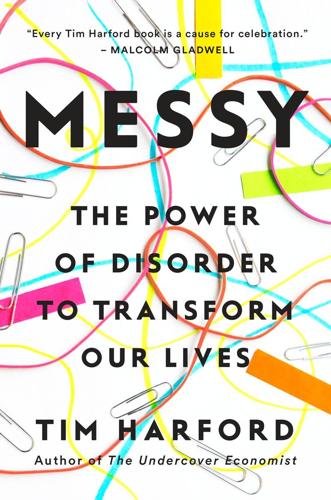
Messy: The Power of Disorder to Transform Our Lives
by
Tim Harford
Published 3 Oct 2016
The media were full of jokes about the “RuBot,” a Twitter account called “Rubio Glitch” appeared (it repeats itself), and Rubio’s campaign was over not long after. A script can seem protective, like a bulletproof vest; sometimes it is more like a straitjacket. Improvising unleashes creativity, it feels fresh and honest and personal. Above all, it turns a monologue into a conversation. In December 1955, Rosa Parks was arrested after refusing to give up her seat on a bus in Montgomery, Alabama, to a white man.35 As a local church leader and already an orator of some renown, Martin Luther King was asked to organize a boycott of Montgomery’s busses. He hesitated. He was exhausted; his newborn baby daughter, Yoki, wouldn’t stop crying in the night.
…
As he spoke, King listened to the crowd, feeling out their response, speaking in the moment. His early sentences were experiments, grasping for a theme, exploring how each sounded and how the crowd responded. Each phrase shaped the phrase that followed. His speech was not a solo; it was a duet with his audience. After a cautious opening, King talked of Rosa Parks, of her character and “the depth of her Christian commitment,” and of how “just because she refused to get up, she was arrested.” The crowd murmured their assent. And after a pause for breath, King changed direction. “There comes a time when people get tired of being trampled over by the iron feet of oppression.”
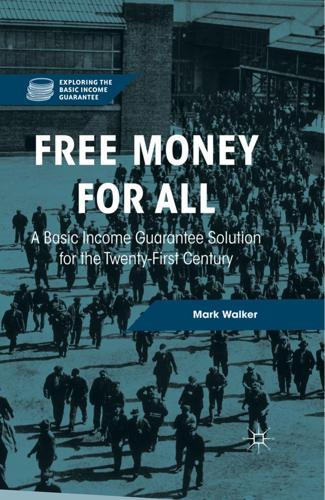
Free Money for All: A Basic Income Guarantee Solution for the Twenty-First Century
by
Mark Walker
Published 29 Nov 2015
Some of these are large-scale events, for example, the Civil War and World War I were catalysts for the end of slavery and enfranchising women. Other times, a single person’s actions, like those of Rosa Parks, can excite many to action and act as a catalyst for change. History teaches both negative and positive lessons. The positive lesson one can draw here is that change almost never happens unless some people agitate for it. Race relations in the United States are not what they should be, but there can hardly be any doubt that CONCLUDING UNSCIENTIFIC POSTSCRIPT 213 things would be worse but for those like Martin Luther King and Rosa Parks, who agitated and sacrificed for change, knowing that their cause was righteous.

Reimagining Capitalism in a World on Fire
by
Rebecca Henderson
Published 27 Apr 2020
Pebbles in an Avalanche of Change “What can I do?” is the question I am asked most often and certainly the most important one. It’s easy to fall into the trap of thinking that only heroes (and heroines!) can change the world. When we tell the story of the civil rights movement, we talk about Martin Luther King and Rosa Parks. When we talk about the New Deal, we talk about Franklin D. Roosevelt. When historians fifty years from now write the history of how we solved global warming, drastically reduced inequality, and remade our institutions, they will focus on a few key events—perhaps in the winter that three superstorms hit the East Coast of the United States, making fixing global warming a completely bipartisan priority, or in the summer that the harvests failed across Africa, sending millions of people north to Europe, making it clear that everyone on the planet had to be given the tools they need to feed themselves.
…
The real world doesn’t actually work that way. Effective leaders ride the wave of change they find bubbling up around them. Martin Luther King did not create the civil rights movement. It grew from decades of work by thousands of African Americans and their allies, each doing the dangerous and difficult work of standing up for change. Rosa Parks was not a lone heroine who simply decided to stay in her seat one evening. She was a deeply committed civil rights worker whose decision that night was taken in close collaboration with a network of experienced female activists. Nelson Mandela did not single-handedly end apartheid in South Africa.
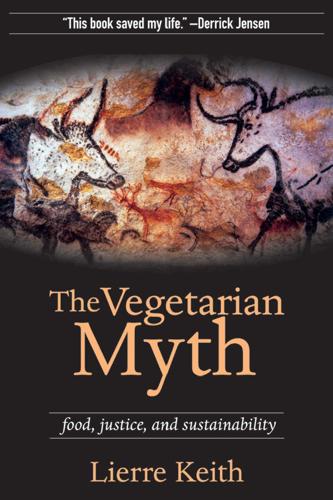
The Vegetarian Myth: Food, Justice, and Sustainability
by
Lierre Keith
Published 30 Apr 2009
Power doesn’t notice the existence of anarchist freegans and it certainly doesn’t care if they eat out of dumpsters. Power will only care when you build a strategic movement against it. Individual action will never be effective. To quote Andrea Dworkin, we need organized, political resistance.36 Rosa Parks on her own ended up in jail. Rosa Parks plus the courage, sacrifice, and political will of the whole Black community of Montgomery, Alabama ended segregation on the public transportation system. And what about breakfast? I’m going to assume that you know our planet is in trouble. Maybe you mostly turn from the depths of that knowledge, afraid of its emotional acid.
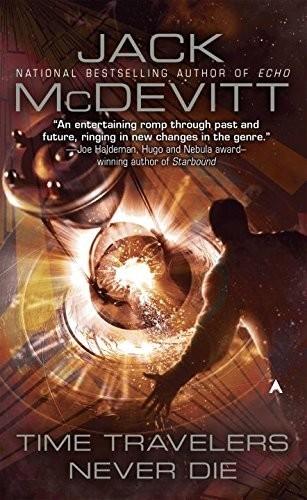
Time Travelers Never Die
by
Jack McDevitt
Published 10 Sep 2009
“Best for us,” he continued, “is to just hang around the church for a bit. Meet some of them. Feel what it’s like. And then get out of the way.” “I guess.” Dave looked uncomfortable. But why not? They were on the cusp of one of the pivotal moments in American history, but a price was going to be paid. “This is our chance to meet Rosa Parks,” said Shel. “And Hosea Williams.” They started walking. Uphill along the side of the road. Dave had his hands in his pockets. “You know,” he said, “we talked about going to the Colosseum to watch the gladiators. This is worse. These people don’t get to defend themselves.” Another car was approaching.
…
“Hey, why are you getting annoyed with me?” “I’m not a hero; I just play one on TV.” “C’mon, Dave, relax. At least we’re here.” They introduced themselves to Ralph Abernathy, and when he asked where they were from, Shel wanted to say, “The next millennium. When things will be better.” And there was Rosa Parks, talking to a group of young girls, barely teens. And Andrew Young. Surrounded by reporters, white and black. “They all seem upbeat,” said Shel. “It’s because they don’t know what’s waiting for them.” “You think it would change anything if they did?” “Don’t know. I can tell you it would stop me.”
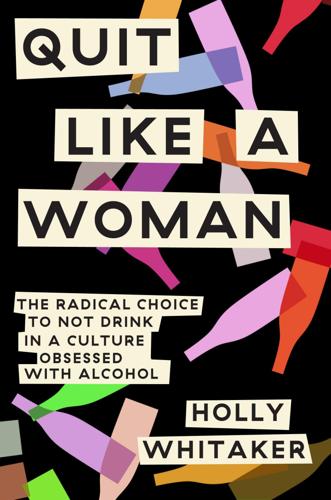
Quit Like a Woman: The Radical Choice to Not Drink in a Culture Obsessed With Alcohol
by
Holly Glenn Whitaker
Published 9 Jan 2020
It makes sense that we would want to drink in the face of it all, that we need a drug to cope, to turn it off, to turn down the volume for just one freaking minute. At the same time our democracy is crumbling, our collective sense of power is erupting. Civil rights movements that have been going on for centuries, decades, years, started by radical activists on the margins of society—from Sojourner Truth to Rosa Parks to Sylvia Rivera at Stonewall to Patrisse Cullors and Alicia Garza, who started the Black Lives Matter movement—finally crashed into the mainstream. Women of privilege are finally waking up en masse to their collective oppression, and their anger has gone viral. The last few years have seen many things, from the #MeToo movement (a second wave of a movement started by Tarana Burke) to our vocalized outrage during the Brett Kavanaugh hearings to the election of our first Muslim woman to Congress, and an unprecedented number of women, people of color, and LGBTQIA folks elected to positions of power throughout the country.
…
Real power is the ability to be in your skin, to know who you are, to know you will always be okay. Real power comes from your gut and your heart and your courage and your bravery and your love. Real power can never be taken away from you and never lost once it’s found. It’s the kind of power that people like Nelson Mandela and Mahatma Gandhi and Martin Luther King, Jr., and Rosa Parks and the Dalai Lama all had or have—a quality within unaffected by outer circumstances, an eternal flame that cannot be touched. I repeat Yogi Bhajan’s words here: You are very powerful, provided you know how powerful you are. I imagine you’re wondering where you even begin to acquire this kind of power.

The New Prophets of Capital
by
Nicole Aschoff
Published 10 Mar 2015
Stories that challenge the status quo are not just about the economic logic of production, profits, and class struggle. The circuits of power in capitalist society are bolstered by systems of oppression and domination that extend beyond class to gender, race, and sexuality. The 1950s and 1960s were alive with stories about the anger of Rosa Parks and Martin Luther King and Malcolm X at Jim Crow and racism. People commiserated with Betty Friedan’s frustration with the cult of femininity and listened to stories about Rachel Carson and her quest to curb pesticide use and later about the Oglala Lakota and their standoff with the FBI at Wounded Knee.
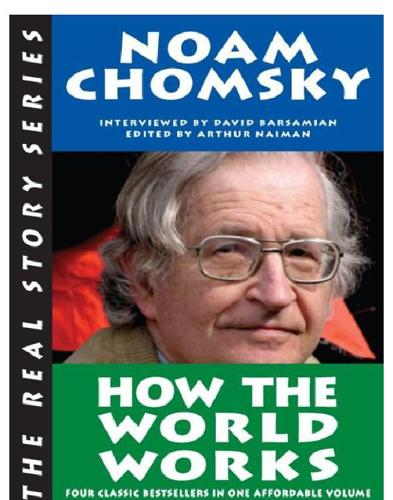
How the World Works
by
Noam Chomsky
,
Arthur Naiman
and
David Barsamian
Published 13 Sep 2011
The current tendencies, many of which are pretty harmful, don’t seem to be all that substantial, and there’s nothing inevitable about them. That doesn’t mean constructive change will happen, but the opportunity for it is definitely there. Resistance Who knows where the next Rosa Parks [the African-American woman whose refusal to sit in the back of the bus ignited the Montgomery bus boycott in 1955] will sit down and spark a movement? Rosa Parks is a very courageous and honorable person, but she didn’t come out of nowhere. There had been an extensive background of education, organizing and struggle, and she was more or less chosen to do what she did. It’s that kind of background that we should be seeking to develop.
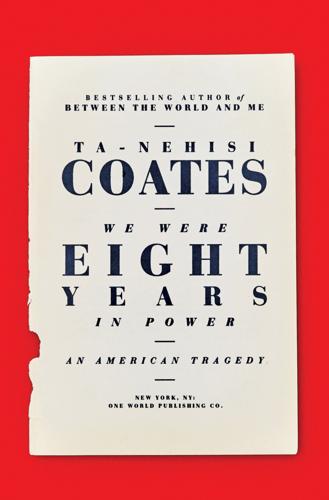
We Were Eight Years in Power: An American Tragedy
by
Ta-Nehisi Coates
Published 2 Oct 2017
His anger and frustration erupted into public view during an NAACP awards ceremony in Washington in 2004 commemorating the fiftieth anniversary of Brown v. Board of Education. At that moment, the shades of mortality and irrelevance seemed to be drawing over the civil rights generation. Its matriarchs, Rosa Parks and Coretta Scott King, would be dead within two years. The NAACP’s membership rolls had been shrinking; within months, its president, Kweisi Mfume, would resign (it was later revealed that he was under investigation by the NAACP for sexual harassment and nepotism—allegations that he denied). Other movement leaders were drifting into self-parody: Al Sharpton would soon be hosting a reality show and, a year later, would be doing ads for a predatory loan company; Sharpton and Jesse Jackson had recently asked MGM to issue an apology for the hit movie Barbershop.
…
Indeed, after distancing himself from Wright, Obama lost almost no black support. Obama offered black America a convenient narrative that could be meshed with the larger American story. It was a narrative premised on Crispus Attucks, not the black slaves who escaped plantations and fought for the British; on the 54th Massachusetts, not Nat Turner; on stoic and saintly Rosa Parks, not young and pregnant Claudette Colvin; on a Christ-like Martin Luther King Jr., not an avenging Malcolm X. Jeremiah Wright’s presence threatened to rupture that comfortable narrative by symbolizing that which makes integration impossible—black rage. From the “inadequate black male” diatribe of the Hillary Clinton supporter Harriet Christian in 2008, to Rick Santelli’s 2009 rant on CNBC against subsidizing “losers’ mortgages,” to Representative Joe Wilson’s “You lie!”
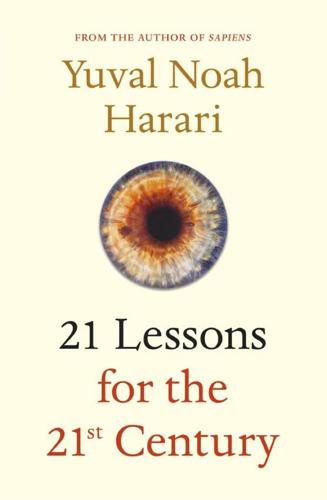
21 Lessons for the 21st Century
by
Yuval Noah Harari
Published 29 Aug 2018
Humans should always retain the freedom to doubt, to check again, to hear a second opinion, to try a different path. Secular people admire Galileo Galilei who dared to question whether the earth really sits motionless at the centre of the universe; they admire the masses of common people who stormed the Bastille in 1789 and brought down the despotic regime of Louis XVI; and they admire Rosa Parks who had the courage to sit down on a bus seat reserved for white passengers only. It takes a lot of courage to fight biases and oppressive regimes, but it takes even greater courage to admit ignorance and venture into the unknown. Secular education teaches us that if we don’t know something, we shouldn’t be afraid of acknowledging our ignorance and looking for new evidence.
…
Creativity can manifest itself in writing a poem, exploring your sexuality, inventing a new app, or discovering an unknown chemical. Fighting for liberty includes anything that frees people from social, biological and physical constraints, be it demonstrating against brutal dictators, teaching girls to read, finding a cure for cancer, or building a spaceship. The liberal pantheon of heroes houses Rosa Parks and Pablo Picasso alongside Louis Pasteur and the Wright brothers. This sounds extremely exciting and profound in theory. Unfortunately, human freedom and human creativity are not what the liberal story imagines them to be. To the best of our scientific understanding, there is no magic behind our choices and creations.
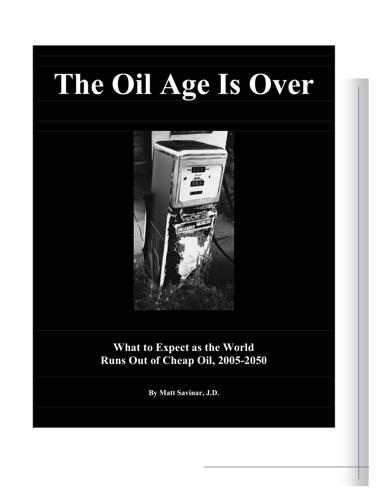
The Oil Age Is Over: What to Expect as the World Runs Out of Cheap Oil, 2005-2050
by
Matt Savinar
Published 2 Jan 2004
Section 802(a)(5) of the Patriot Act defines "Domestic Terrorism" as "activities that — involve acts that are a violation of the criminal laws of the United States or of any state and appear to be intended to influence the policy of a government by intimidation or coercion." According to this definition, Rosa Parks would have been considered a terrorist for not giving up her seat on the bus. It’s not just the Patriot Act you need to read up on. Several other pieces of legislation promise to turn the US into a fascist-style police state: A. Model State Emergency Health Powers Act In November 2001, the Bush administration issued executive orders allowing for the use of special military courts and empowering Attorney General John Ashcroft to detain noncitizens indefinitely; the Model State Emergency Health Powers Act (MEHPA) has been introduced to the governors of all 50 states.

Underestimated: An Autism Miracle
by
J. B. Handley
and
Jamison Handley
Published 23 Mar 2021
I’m starting to see a wonderful, empowering theme to all these lessons, and Jamie is certainly responding. At the end of the lesson, DM asks Jamie what he would title his own autobiography. “Earnestly underestimated.” I immediately hear from my sister-in-law, Kricken, via text: “Your son blows my mind. He’s a brilliant buddha.” In the afternoon, DM walks Jamie through a lesson about Rosa Parks. She asks Jamie why he thinks the bus boycott was so effective. Jamie spells, “There is strong influence when the money stores dry up.” DM shifts the lesson to ask Jamie a more personal question, “Name a commonly held belief around autism that you would like to change.” I’m sitting at my desk as these words hit my phone, Lisa is texting me real time so it almost feels like I’m there.
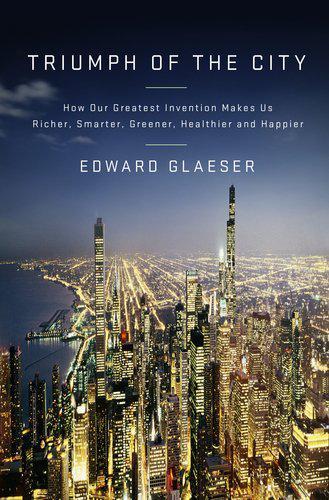
Triumph of the City: How Our Greatest Invention Makes Us Richer, Smarter, Greener, Healthier, and Happier
by
Edward L. Glaeser
Published 1 Jan 2011
These places had their roots in the brilliant ideas of urban entrepreneurs, but they evolved into places that thrived by keeping costs down through the economies of specialization and scale. The unusual era of the industrial city is over, at least in the West, and we are left with the problems of former manufacturing giants that have been unable to reinvent themselves in the new era. CHAPTER 2 Why Do Cities Decline? The corner of Elmhurst Street and Rosa Parks Boulevard in Detroit feels as far from New York’s Fifth Avenue as urban space can get in America. Though this intersection lies in the heart of Detroit, much of the nearby land is empty. Grass now grows where apartment buildings and stores once stood. The Bible Community Baptist Church is the only building at the intersection; its boarded-up windows and nonworking phone number suggest that it doesn’t attract many worshippers.
…
In Detroit, a 93 percent white police force didn’t seem all that integrated in a city that was close to 50 percent black. While later mayors, like Rudy Giuliani, would reduce crime with rigorous policing, in the 1960s, it wasn’t obvious that aggressive enforcement could keep the peace. Less than a mile down Rosa Parks Boulevard from the Elmhurst Street corner, a dilapidated park occupies the corner at Clairmount Street. This is the site of an event from which Detroit has still not recovered almost half a century later. In the wee hours of Sunday morning, July 23, 1967, a club on that corner was hosting a party for some returning veterans, when Detroit’s police department staged a raid.
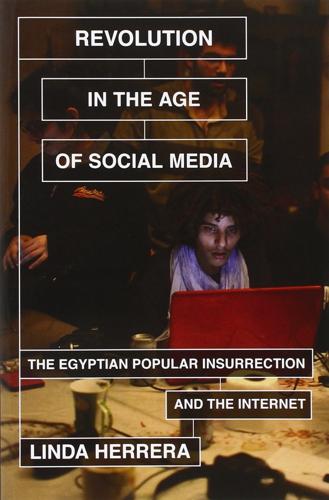
Revolution in the Age of Social Media: The Egyptian Popular Insurrection and the Internet
by
Linda Herrera
Published 14 Apr 2014
These two men became symbols of mass movements, the detonators which touched the fiber of people and the hooks that motivated them to join, as the anti-FARC campaigner Oscar Morales wrote about in the AYM manual for cyberdissidents. Activists have long understood the power of symbols in galvanizing people to join a movement; think of what Rosa Parks meant to the civil rights movement, or Nelson Mandela to the anti-apartheid struggle. In the age of social media activism, the difference has been that an image and story can proliferate in the guise of a meme and travel across space at breakneck speed. In the breathtaking pace at which images and stories spread, there is little time for fact-checking, reflection, or bottom-up movement building.

How to Blow Up a Pipeline
by
Andreas Malm
Published 4 Jan 2021
The fact that (as of this writing) it has not engendered a single riot or wave of property destruction would be taken as a sign of strength by the strategic pacifists, proof of correspondence with their ideal. But could it not also be seen as the opposite – as a failure to attain social depth, articulate the antagonisms that run through this crisis and, not the least, acquire a tactical asset? Does this movement possess a radical flank? Greta Thunberg might well be the climate equivalent of Rosa Parks, an inspiration she has acknowledged and often been compared to. But she is not (yet) an Angela Davis or a Stokely Carmichael. Selective memory applies to South Africa too. It took more than divestment to bring down apartheid. It also took more than civil disobedience: in the 1950s and early ’60s, the African National Congress (ANC) experimented with bus boycotts, strikes, pass-burning, campaigns to refuse segregation in trains and post offices and found that they invited little else than overwhelming repression.

The Color of Money: Black Banks and the Racial Wealth Gap
by
Mehrsa Baradaran
Published 14 Sep 2017
The Panthers’ mission, in sum, was “to throw off” any despotic regime, which in this particular case was the United States government.130 Everything had changed in just the few short years spanning 1965 to 1968. When reflecting on the civil rights movement, most Americans focus on the Montgomery bus boycott, King’s “I Have a Dream” speech, the Civil Rights and Voting Rights Acts, Rosa Parks, and Brown vs. Board of Education. But all these events happened before 1965. By 1969, the leaders of the movement, Malcolm X, King, John F. Kennedy, and Robert Kennedy, had all been killed, and Johnson was out of office. The consensus of the black community toward the civil rights movement, if there was one, was that it had failed, or at least that it was incomplete.
…
He chastised his Democratic primary opponent, Jesse Jackson, for overemphasizing racial problems, which he referred to as “an issue that’s already divided the people," yet he enthusiastically embraced the once-divisive leader of the previous era, stating “I see an America in which Martin Luther King’s dream is our national dream."1 President Ronald Reagan also harshly denounced racism and embraced King’s dream. When Reagan made King’s birthday a national holiday in 1983, he announced, “We’ve made historic strides since Rosa Parks refused to go to the back of the bus. As a democratic people, we can take pride in the knowledge that we Americans recognized a grave injustice and took action to correct it."2 Yet he had consistently maintained opposition to civil rights laws because he believed them to be unnecessary government intrusions into private markets.3 Black poverty came to be seen as a direct result of a culture that lacked responsibility, work ethic, and “family values."
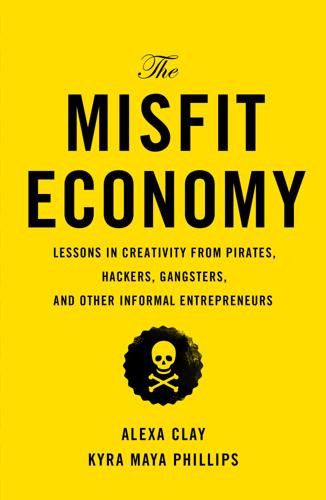
The Misfit Economy: Lessons in Creativity From Pirates, Hackers, Gangsters and Other Informal Entrepreneurs
by
Alexa Clay
and
Kyra Maya Phillips
Published 23 Jun 2015
In an age of sexual prudishness, Helena Wright challenged women to think about sex as a pleasurable activity beyond reproduction. Writers Edgar Allan Poe and Jules Verne got us to think about the feasibility of space flight. Jane Austen called our ideas of marriage into question through her romantic fiction. Rosa Parks challenged norms around segregation by refusing to give up her seat on the bus. Coco Chanel pushed the boundaries of women’s fashion and never hesitated to speak her mind (“The most courageous act is to still think for yourself, aloud,” she once said). Artists and writers, protestors and social reformers, misfits all.

USA Travel Guide
by
Lonely, Planet
ALABAMA FACTS » Nickname The Heart of Dixie » Population 4.7 million » Area 52,419 sq miles » Capital city Montgomery (population 224,119) » Other cities Birmingham (population 212,237) » Sales tax 4%, but up to 11% with local taxes » Birthplace of Author Helen Keller (1880–1968), civil rights activist Rosa Parks (1913–2005), musician Hank Williams (1923–53) » Home of US Space & Rocket Center » Politics GOP stronghold – Alabama hasn’t voted democratic since 1976 » Famous for Rosa Parks and the Civil Rights movement » Bitterest rivalry University of Alabama vs Auburn University » Driving distances Montgomery to Birmingham 91 miles, Mobile to Dauphin Island 38 miles History Alabama was among the first states to secede in the Civil War.
…
Racial segregation and Jim Crow laws survived into the mid-20th century, when the Civil Rights movement campaigned for desegregation of everything from public buses to private universities, a notion that Governor George Wallace opposed. In perhaps the most famous moment in civil rights history, an African American woman named Rosa Parks refused to give up her bus seat to a white passenger and was arrested; the ensuing uproar began to turn the tide in favor of racial equality. Alabama saw brutal repression and hostility, but federal civil rights and voting laws eventually prevailed. At a political level, reform has seen the election of dozens of African American mayors and representatives.
…
East of Huntsville, in Scottsboro, you’ll find the infamous Unclaimed Baggage Center ( 256-259-1525; www.unclaimedbaggage.com; 509 W Willow St; 9am-6pm Mon-Fri, 8am-6pm Sat) , which draws pilgrims from far and wide who peruse the now-for-sale belongings of unfortunate air travelers who have lost their baggage irrevocably down the dark annals of fate. Finders keepers. The area receives some acclaim for music history, and the cheesy-cool Alabama Music Hall of Fame (www.alamhof.org; 617 Hwy 72 W, Tuscumbia; adult/child $8/5; 9am-5pm Mon-Sat, 1-5pm Sun summer) immortalizes both Hank Williams and Lionel Richie. Montgomery In 1955 Rosa Parks refused to give up her seat to a white man on a Montgomery bus, launching a bus boycott and galvanizing the Civil Rights movement nationwide. The city has commemorated that incident with a museum, which (along with an excellent Shakespeare program) is the main reason to visit. Although it’s Alabama’s capital city, Montgomery feels more like a sleepy little city with a dead downtown.

The Radical Fund: How a Band of Visionaries and a Million Dollars Upended America
by
John Fabian Witt
Published 14 Oct 2025
By then the Fund’s resources had nearly been depleted; no money was forthcoming. But Highlander had become a southern Brookwood. After Brookwood closed in 1937, the Tennessee school would become the training ground for the Congress of Industrial Organizations’ southern organizing campaigns. It was at Highlander in 1955 that Montgomery, Alabama, resident and activist Rosa Parks attended a workshop on the significance of the Supreme Court’s decision in Brown v. Board of Education. A few months later, she refused to give up her seat on a segregated Montgomery bus. Working in the tradition of Brookwood’s racially integrated labor education program from the 1920s, Highlander hosted civil rights figures like Martin Luther King Jr., John Lewis, and Diane Nash.82 Highlander Folk School in Tennessee; the school’s founder, Myles Horton, is seated on the grass at center.
…
The postwar ACLU board of trustees added Thurgood Marshall to its roster of civil libertarians. Walter Reuther, in turn, joined the board of the NAACP. A contribution from his United Auto Workers helped finance Brown v. Board of Education at the Supreme Court. The next year, when Highlander Folk School alumna Rosa Parks helped touch off the Montgomery bus boycott, the UAW would again provide vital support. The Brown decision itself sustained the boycott movement by providing crucial authority for a federal court order against the city’s bus companies. In 1960, the old League for Industrial Democracy spun off Students for a Democratic Society, better known as SDS.
…
Niebuhr was an occasional advisor: Memorandum of Meeting of the Committee on Brookwood, Jan. 13, 1933, b. 6, f. 4, BGP. Thomas: Ibid. support: Glen, Highlander, 15–16. “neither A. F. of L.”: Horton, Long Haul, 61. trained at Brookwood: Glen, Highlander, 26. joint grant: Brookwood Grant Rejection, Dec. 1936, r. 36, b. 57, AFPSR. training ground: Adams and Horton, Unearthing Seeds of Fire, 100. Rosa Parks: Ibid., 148. King: Ibid., 123. Lewis: Ibid., 144. 14: THE MESSENGER “all along been workers”: JWJ to AFPS, Dec. 17, 1924, r. 10, b. 16, AFPSR. 1. Randolph approached: APR to EGF, Sep. 21, 1925, r. 6, b. 10, AFPSR. 2. novel experiment: APR to AFPS, Jan. 6, 1925, r. 6, b. 10, AFPSR; Eric Arnesen, “A.

How to Be Black
by
Baratunde Thurston
Published 31 Jan 2012
Take one! On March 1, you’ll return to peak form, fired up and ready to marginalize. 4. Know the Key People There have been lots of unsung heroes in the history of Africans in America, but they’re unsung for a reason. To appear knowledgeable, you need to know only a few: Dr. Martin Luther King Jr., Rosa Parks, Malcolm X, Harriet Tubman, Sojourner Truth, Jackie Robinson, Muhammad Ali, W. E. B. Du Bois, Booker T. Washington, J.J. from Good Times, Frederick Douglass, Langston Hughes, Thurgood Marshall, Dr. Martin Luther King Jr., and Barack Obama. When in doubt, see if there’s ever been a feature-length film about the person or a T-shirt sold using his or her image.

Meaty: Essays
by
Samantha Irby
Published 12 Sep 2013
But with every politely declined camping invitation and spat out mouthful of roasted beets, it became that much clearer to me that, despite my penchant for craft beers and J.Jill knit cardigans, I AM NOT WHITE. It has been exceptionally difficult for me to come to terms with this shocking revelation. I don’t know what the fuck Kwanzaa is. If a bitch asks me some black history shit I’m always like,“I don’t fucking know! Rosa Parks?” And black people are always telling me I “talk white,” which until recently I thought was due to my passionate defense of Christopher Guest films, but now realize is a criticism of the fact that when I say “motherfucker,” I pronounce the T. And the -er. I’m pretty much an expert in white people.
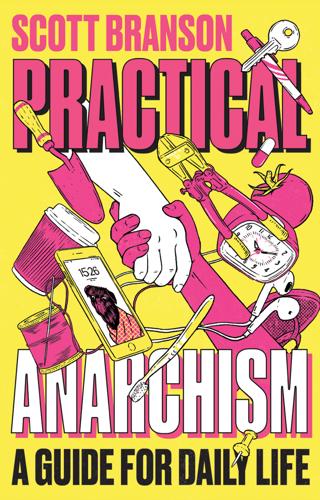
Practical Anarchism: A Guide for Daily Life
by
Scott. Branson
Published 14 Jun 2022
If we acknowledge that spending or not spending money is not going to make or break the revolution, we can free up space to disinvest from the relations to power that money normalizes for us—that is, including even the moralistic idea that we can make a clean individual break with it. The Myth of the Moral Consumer A popular activist tactic that seems perfectly aimed at capitalism is the boycott. Famously, this tactic worked during the Montgomery bus boycott of 1955–6, legendarily kicked off by Rosa Parks’ refusal to move to the back of the bus. Similar to the method employed by the strike, where workers stop production (turn labor time to zero), the consumer refuses to purchase. Since the Montgomery bus boycott and the co-optation of the Black liberation movement in the USA into the narrative of civil rights as an accomplished fact, the tactic of boycott has transformed into a more liberal individual act divorced from movement building or direct action.
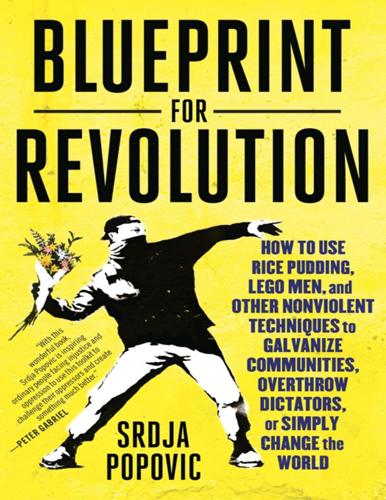
Blueprint for Revolution: How to Use Rice Pudding, Lego Men, and Other Nonviolent Techniques to Galvanize Communities, Overthrow Dictators, or Simply Change the World
by
Srdja Popovic
and
Matthew Miller
Published 3 Feb 2015
They are meant to give you not only the tools but also, and more important, the con dence to approach life a di erent way and the understanding that the greatest changes, the ones that are most far-reaching and long-lasting, are never achieved by armies and tanks and cruise missiles or by well-paid consultants with their sharp suits and leather briefcases. Rather, lasting change comes from the tired woman who refuses to give up her seat on the bus, a canny camera store owner who nds his way to the city council, or a scrawny bald little Indian dude who goes hungry for his cause and wears simple clothes that he makes himself. These heroes—Rosa Parks, Harvey Milk, Gandhi, and others—are revered not because they are so special but because they are utterly ordinary. They did nothing that any of us can’t do. The only reason they’re enshrined in history is because, unlike so many of us, they had the courage to act up and the smarts to do it right.
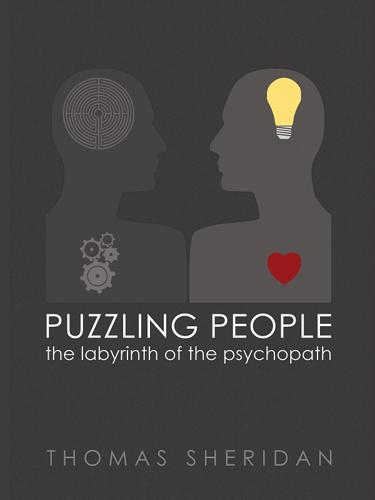
Puzzling People: The Labyrinth of the Psychopath
by
Thomas Sheridan
Published 1 Mar 2011
Many of these ‘celebrity’ scientists who may have expertise in one discipline, are increasingly being called upon by mass media/governments to give their viewpoints on non-scientific issues and often with the most bizarre results – such as when Michio Kaku made the incredible and disgraceful accusation during a TV interview that people who question authority and the status quo are ‘terrorists’. Mahatma Gandhi, Rosa Parks, Crazy Horse, Monet and the Impressionists, Steve Biko, Mozart, John F. Kennedy, Lech Walesa and indeed Galileo Galilei would be deemed ‘terrorists’ using Michio Kaku’s yardstick to quantify who is and isn’t a danger to the status quo, yet the mainstream media let him get away with these shocking comments because they agree wholeheartedly with them.
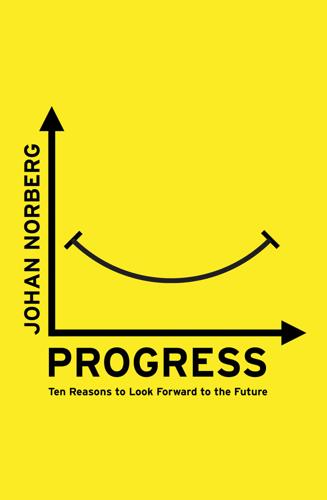
Progress: Ten Reasons to Look Forward to the Future
by
Johan Norberg
Published 31 Aug 2016
In 1954 the Supreme Court desegregated public schools, and when the Arkansas Governor called out the National Guard to stop Little Rock Central High School from accepting nine black students, President Eisenhower sent federal troops to the high school to protect the students. But the major steps towards racial equality were taken by the African Americans’ own civil rights movement. On 1 December 1955, forty-two-year-old Rosa Parks refused to go to the back of a bus in Montgomery, Alabama, which was the space the law had reserved for African Americans. She said that she was tired after a long day. The police took her to jail. A group of black community leaders protested by organizing a bus boycott. They chose the twenty-six-year-old Martin Luther King Jr. as their spokesman, a Baptist minister with a gift for oratory.

They Have a Word for It A Lighthearted Lexicon of Untranslatable Words & Phrases-Sarabande Books (2000)
by
Howard Rheingold
Published 10 Mar 2020
Every business, every school, every institution in which 214 THEY HAVE A WORD FOR IT there is an established order sooner or later comes into confrontation with the kind of person whose stubborn questioning of authority sometimes leads to large-scale social transformations. In its highest form, an American contestaire like Rosa Parks, the black woman who refused to move to the back of a bus and thus set off the civil-rights movement of the 1960s, is the kind of person who has helped social organizations evolve ever since the age of potentates. On the more negative side, no society can exist in a state of perpetual revolution, or the social fabric begins to unravel.

Moon Oregon Trail Road Trip: Historic Sites, Small Towns, and Scenic Landscapes Along the Legendary Westward Route
by
Katrina Emery
and
Moon Travel Guides
Published 27 Jul 2020
Historic Haymarket District Modern pioneers in today’s Lincoln come from all over the world—Nebraska has welcomed refugees from Vietnam, Iraq, Afghanistan, Mexico, Bosnia, Bhutan, Sudan, and other countries through a program started in the 1970s, when the State Department identified Nebraska as a “refugee-friendly” state, with a strong economy able to support an influx of newcomers, creating a truly multicultural city; in 2015, Lincoln settled the most refugees per capita in the nation. The University of Nebraska at Lincoln campus is also a major draw for the city, promoting a vibrant arts and culture scene for students and residents. Getting There and Around Lincoln is 41 miles (65 km) north of Beatrice on U.S. 77, about a 45-minute drive. Exit onto Rosa Parks Way and follow it for 2 miles (3.2 km), turning left onto South 10th Street into town. If you’re coming from Omaha, drive 50 miles (80 km) southwest on I-80. The drive from Omaha takes about an hour. Uber (www.uber.com) and Lyft (www.lyft.com) operate in Lincoln. Orientation Lincoln is laid out in an easily navigable grid of numbers (east-west) and letters (north-south).
…
The visitors center also has displays about the tallgrass prairie and smaller live animals including snakes, turtles, and owls. On the east side of the park, giant sandstone columns, near a pond, make a good place for kids to run around. From downtown Lincoln, head south on South 9th Street, then turn right onto Rosa Parks Way. In 2.3 miles (3.7 km), continue onto South Coddington Avenue for another 1.4 miles (2.3 km). The entrance to the park is on your right. The drive takes 20 minutes. Spring Creek Prairie Audubon Center Find trail ruts on the grounds of the Spring Creek Prairie Audubon Center (11700 SW 100th St., Denton, 402/797-2301, www.springcreek.audubon.org, $4), located just southwest of Lincoln.
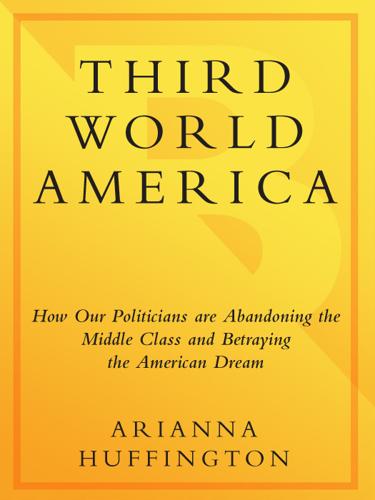
Third World America: How Our Politicians Are Abandoning the Middle Class and Betraying the American Dream
by
Arianna Huffington
Published 7 Sep 2010
And that’s what he set out to do: produce the votes in Washington by getting the people to demand it. Two days later, the “Bloody Sunday” confrontation in Selma—in which marchers were met with tear gas and truncheons—captured the conscience of the nation. Five months after that, on August 6, LBJ signed the National Voting Rights Act into law, with King and Rosa Parks by his side.180 At that March meeting, LBJ didn’t think the conditions for change were there. So King went out and changed the conditions. Similarly, before the start of WWII, legendary labor leader A. Philip Randolph, president of the Brotherhood of Sleeping Car Porters, lobbied FDR to promote equal employment opportunities in the defense industry.

The Sociopath Next Door
by
Martha Stout
Published 8 Feb 2005
These twenty-three people are diverse in terms of race, religion, socioeconomic status, and specific goals, but all have one thing in common: an extraordinarily powerful sense of conscience, an “overdeveloped” sense that they are responsible for the welfare of their fellow human beings. They represent, from a psychologist's vantage point, the diametric emotional and mental opposite of the sociopaths we have been discussing. Colby and Damon's “moral exemplars” include Virginia Foster Durr, the Southern belle turned civil rights activist who was the first person to hug Rosa Parks when she stepped out of jail; Suzie Valadez, who has spent many years feeding, clothing, and providing medical care to thousands of poor Mexicans in Ciudad Juárez; Jack Coleman, a former president of Haverford College, noted for his “blue-collar sabbaticals” as a ditch digger, a garbageman, a homeless person; businessman Cabell Brand, who devoted himself to the creation of Total Action Against Poverty in Roanoke, Virginia; and Charleszetta Waddles, founder of the Perpetual Mission, who dedicated her life to helping the elderly and the poor, the unwed mothers, the prostitutes, and the abused children of Detroit, Michigan.
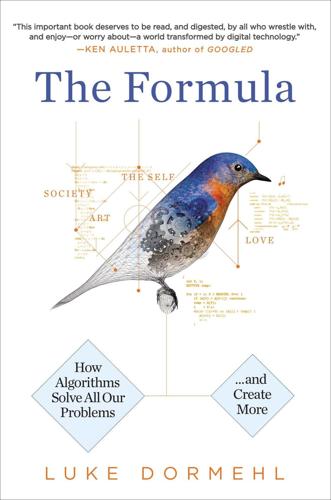
The Formula: How Algorithms Solve All Our Problems-And Create More
by
Luke Dormehl
Published 4 Nov 2014
These types of discriminatory behavior could prove challenging to break, particularly if they are largely invisible and in most cases users will never know how they have been categorized. Unlike the shared history that was drawn on to help bring about the civil rights or women’s lib movements, algorithmically generated consumer categories have no cultural background to draw upon. What would have happened in the case of Rosa Parks’s December 1955 protest—which garnered the support of the African-American community at large—had she not been discriminated against purely on the basis of her skin color, but on several thousand uniquely weighted variables based upon age, location, race and search term history? There is racism, ageism and sexism, but is there an “ism” for every possible means of demographic and psychographic exclusion?
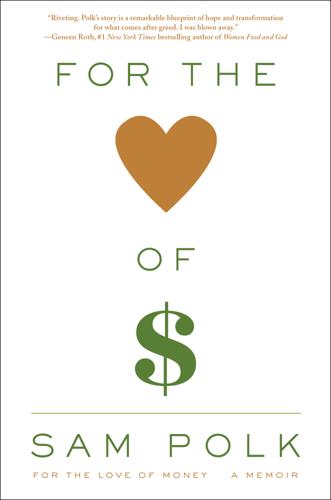
For the Love of Money: A Memoir
by
Sam Polk
Published 18 Jul 2016
There were countless injustices out there—rampant poverty, a porn and sexual assault epidemic, swelling prison populations, an obesity crisis—and I wasn’t doing a thing about them. If I’d lived in the ’60s, I would not have been on those buses with the Freedom Riders. I would have been betting on which companies would benefit from the civil rights movement. I would have been long the stocks and bonds of taxi companies and hospitals during the Rosa Parks bus strike, and I would have been short the department stores that were being boycotted. My words would have been on the side of the civil rights activists, but my actions would have been on the side of enriching myself. I looked up at my colleagues and realized that I’d been lost in thought for the last several minutes, and no one had even noticed.

Humans as a Service: The Promise and Perils of Work in the Gig Economy
by
Jeremias Prassl
Published 7 May 2018
The truth is, what Silicon Valley still calls ‘Disruption’ has evolved into something very sinister indeed.31 In sharing-economy doublespeak, ignoring regulation might come to be seen as a virtue of the highest order, with platforms’ law-breaking likened * * * 40 Doublespeak to that of resistance heroes ranging from Mahatma Gandhi to Rosa Parks. Professors Frank Pasquale and Siva Vaidhyanathan have attacked these com- parisons and suggested a darker analogy, arguing that today’s: ‘corporate nullification’ follow[s] in the footsteps of Southern governors and legislatures [during the civil rights battles] in the United States who declared themselves free to ‘nullify’ federal law on the basis of strained and opportunistic constitutional interpretation . . .

You Can't Touch My Hair: And Other Things I Still Have to Explain
by
Phoebe Robinson
Published 3 Oct 2016
And most important, did he not realize that he was a magical, mystical black dude who has the ability to time jump? When you are a magical, mystical black dude who has the ability to time jump, you have ONE JOB: Make life better for black people in big and small ways. That’s it! That’s all you gotta do. I mean, you could’ve skipped to the ’50s and been the hype man for Rosa Parks when she refused to give up her seat on the bus. A few Awww, shits would have been perfect. You could’ve gone to the ’60s and put some Gold Bond foot powder in MLK’s wingtips to help keep them smelling fresh while he’s marching, and I would be like, “Great job.” You could have hit up the ’80s and found a black person to direct The Color Purple the way it should have been.
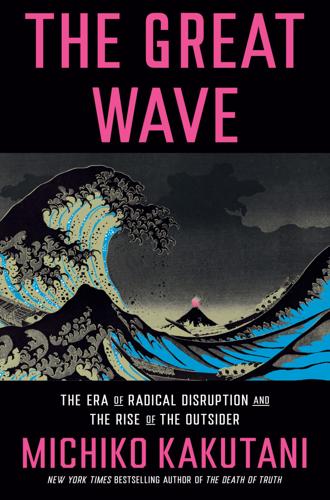
The Great Wave: The Era of Radical Disruption and the Rise of the Outsider
by
Michiko Kakutani
Published 20 Feb 2024
After seeing police tear-gas protesters near the statue, two Richmond-based artists, Dustin Klein and Alex Criqui, decided to reclaim the statue by projecting images on it of African American heroes. Through the magic of light, the statue was turned into a screen on which there appeared images of Harriet Tubman, Frederick Douglass, W.E.B. Du Bois, Martin Luther King Jr., Rosa Parks, Malcolm X, Angela Davis, James Baldwin, and John Lewis. Some nights, there were Black Lives Matter signs, or a rainbow-colored LGBTQ+ flag, or the message “No Justice, No Peace.” Photos of the reclaimed statue rocketed around the world on social media and in the pages of newspapers and magazines.

Au Contraire: Figuring Out the French
by
Gilles Asselin
and
Ruth Mastron
Published 1 Dec 2000
All these people have brought fame, honor, or glory to France and, from a French point of view, have made it more worthy of respect in the eyes of the world. Of course, Americans also admire similar heroes such as Thomas Jefferson, Abraham Lincoln, Eleanor Roosevelt, Martin Luther King Jr., John F. Kennedy, Rosa Parks, and others who improved the lives of millions through their personal efforts and struggles. In recent years, though, another type of American hero has emerged, possibly in connection with the adulation of celebrities: the individual who succeeds by surmounting some barrier to self-realization or by surviving personal challenges.

This Chair Rocks: A Manifiesto Against Ageism
by
Ashton Applewhite
Published 10 Feb 2016
She was referring to a guy in his twenties whom she’d met through her daughter and who also loved an English rock band named Muse. The woman felt she’d missed out on a wild youth, discovered rock music in her fifties, and became an avid concert goer, usually alone. She was brave, and she was having a blast—and in a less ageist society, it wouldn’t call for courage. Not to turn this happy groupie into Rosa Parks, but that’s how desegregation happens. People with the most at stake—olders, in this case—step up and step out. They stop conforming. The open-minded welcome them, and incremental social change takes place. Dance floors and rock concerts are examples at one end of the social spectrum. What about hitting a trendy restaurant even if you’ll be the only gray head in the room, or opting for Airbnb even though older travelers tend to default to hotels, or exploring a neighborhood that skews young?
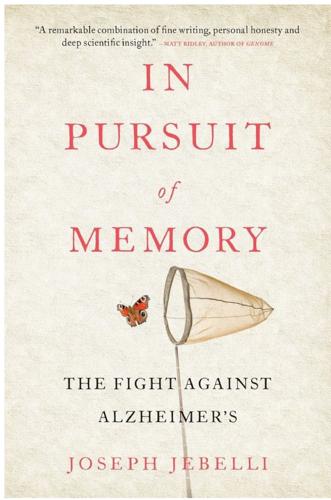
In Pursuit of Memory: The Fight Against Alzheimer's
by
Joseph Jebelli
Published 30 Oct 2017
It affects 47 million people worldwide and more than 800,000 in the UK alone.1 As the world’s population ages, Alzheimer’s is expected to affect 135 million people by 2050, overtaking cancer to become the second leading cause of death after heart disease.2 We’ve now reached a point at which almost everyone knows someone–whether a family member or a friend–who has been affected. In recent years, cases from the echelons of high society have reached our ears as well. Rita Hayworth, Peter Falk, Charlton Heston, Rosa Parks, Margaret Thatcher–all eventually developed Alzheimer’s. When President Ronald Reagan was diagnosed, in November 1995, he published a handwritten letter to the American public: ‘At the moment I feel just fine. I intend to live the remainder of the years God gives me on this earth doing the things I have always done… Unfortunately, as Alzheimer’s disease progresses, the family often bears a heavy burden.

We Are Never Meeting in Real Life
by
Samantha Irby
Published 14 Apr 2017
You’re not mentally ill; you’re ghetto. Sitting in that hospital bed, talking with a dude who was fresh out of medical school and looked like he was playing doctor with his father’s stethoscope looped around his neck, I was so fucking embarrassed, ashamed to be talking to him about being so mad and so sad most of the time. Letting Rosa Parks and Harriet Tubman down by talking about my silly little feelings. — I was born to one of those mythical black hero women, a single mother who somehow managed to graduate both high school and a nursing program despite having had her first child at sixteen, a woman I never saw pop a pill or take a drink or bury her head under a pillow for three days at a time.

Palaces for the People: How Social Infrastructure Can Help Fight Inequality, Polarization, and the Decline of Civic Life
by
Eric Klinenberg
Published 10 Sep 2018
In one memorable scene, Eddie the barber, played by Cedric the Entertainer, tells his patrons: “Now, I probably wouldn’t say this in front of white folk, but in front of y’all I’ll speak my mind….One, Rodney King shoulda got his ass beat for driving drunk and being grown in a Hyundai. Two, O.J. did it. And three, Rosa Parks ain’t do nothing but sit her black ass down.” Eddie, who’s loudly challenged by nearly everyone around him as he makes these claims, is clearly not speaking on behalf of the film’s writer or director. It’s not the substance of the lines that matters. It’s the fact that the barbershop allows patrons to articulate controversial ideas, and to argue them out until everyone has a better sense of who they are, why they’re in their situation, and what they believe.
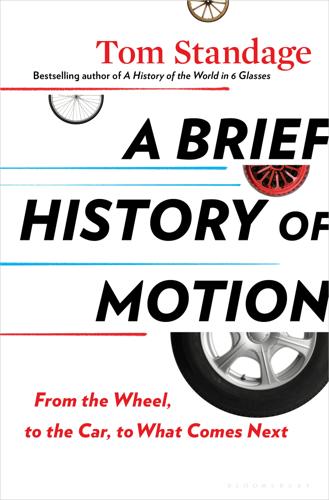
A Brief History of Motion: From the Wheel, to the Car, to What Comes Next
by
Tom Standage
Published 16 Aug 2021
As well as avoiding discrimination, traveling by car was a way for Black motorists to deny custom and funding to segregated transport systems. But cars could also play a more direct role in the struggle for civil rights, as African American drivers showed in 1956, when they used their cars to support the Montgomery Bus Boycott. Planning for a citywide bus boycott had been under way for several months by the time Rosa Parks was arrested for refusing to give up her seat to a white passenger on a Montgomery bus, on December 1, 1955. “I only knew that, as I was being arrested, that it was the very last time that I would ever ride in humiliation of this kind,” she later recalled. The following Sunday, plans for a one-day boycott, to take place the following day, were made public through announcements at Black churches in the area, and the distribution of flyers.
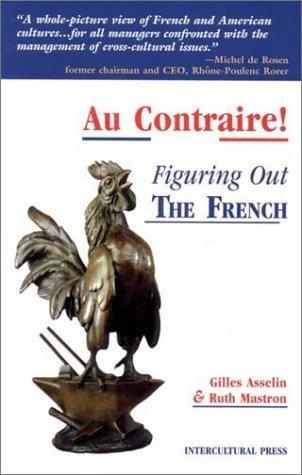
Au Contraire!: Figuring Out the French
by
Gilles Asselin
and
Ruth Mastron
Published 14 Apr 2001
All these people have brought fame, honor, or glory to France and, from a French point of view, have made it more worthy of respect in the eyes of the world. Of course, Americans also admire similar heroes such as Thomas Jefferson, Abraham Lincoln, Eleanor Roosevelt, Martin Luther King Jr., John F. Kennedy, Rosa Parks, and others who improved the lives of millions through their personal efforts and struggles. In recent years, though, another type of American hero has emerged, possibly in connection with the adulation of celebrities: the individual who succeeds by surmounting some barrier to self-realization or by surviving personal challenges.

Made to Stick: Why Some Ideas Survive and Others Die
by
Chip Heath
and
Dan Heath
Published 18 Dec 2006
Jared’s 210-pound neighbor shaving an inch off his waistline is not. We’ve all got a huge mental inventory of Challenge plot stories. The American hockey team beating the heavily favored Russians in the 1980 Olympics. The Alamo. Horatio Alger tales. The American Revolution. Seabiscuit. The Star Wars movies. Lance Armstrong. Rosa Parks. Challenge plots are inspiring even when they’re much less dramatic and historical than these examples. The Rose Blumkin story doesn’t involve a famous character. Challenge plots are inspiring in a defined way. They inspire us by appealing to our perseverance and courage. They make us want to work harder, take on new challenges, overcome obstacles.
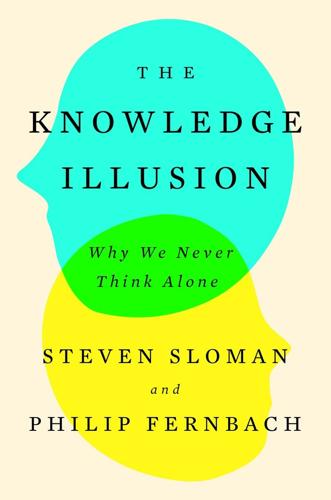
The Knowledge Illusion
by
Steven Sloman
Published 10 Feb 2017
Steele, Fred Shuttlesworth, Joseph Lowery, and Ralph Abernathy, all of whom demonstrated courage and determination. And civil rights depended on great men and women before King, like the abolitionist Frederick Douglass and suffragette leaders like Susan B. Anthony to name just two, as well as those on the front lines of the civil rights movement like Coretta Scott King, Rosa Parks, and the four African-American college students who jump-started the movement through a sit-in. They bravely took seats at the whites-only lunch counter at the Woolworth’s in Greensboro, North Carolina, and were refused service but waited patiently in the face of threats and intimidation. These and many others were responsible for the tectonic shift that occurred in the legal position of minorities in America in the sixties.

Who Are We—And Should It Matter in the 21st Century?
by
Gary Younge
Published 27 Jun 2011
“The essential characteristic of a nation is that all its individuals must have many things in common,” wrote nineteenth-century French philosopher Ernest Renan in Qu’est-ce qu’une nation?, “and must have forgotten many things as well.” What is true for nations is true for all identities. We remember Rosa Parks, the seamstress and activist who was thrown off the Montgomery bus because she refused to sit at the back. But who will claim James Blake, the bus driver who ejected her? Ricci discovered his whiteness at the precise moment when it became advantageous for him to do so, and saw in it only victimhood.

After Zionism: One State for Israel and Palestine
by
Antony Loewenstein
and
Ahmed Moor
Published 14 Jun 2012
But the American experience carries no recognisable historical parallels to the Palestinian situation when it is framed as a quest for a state. The American revolutionary period is a distant memory that bears little resemblance to the twentieth-century occupation experience. That’s not true about the equal rights struggle, however. Rosa Parks and Martin Luther King are alive in the national spirit of the United States – and they are the best-fit for understanding what is really happening in Israel/Palestine. The question of how to arrive at equal rights in Israel/Palestine is an open one, with which many of us are currently engaged.

Disrupted: My Misadventure in the Start-Up Bubble
by
Dan Lyons
Published 4 Apr 2016
Some, like Uber and Airbnb, have built their businesses by defying regulations. Then again, if laws are stupid, why follow them? In the World According to Start-ups, when tech companies cut corners it is for the greater good. These start-up founders are not like Gordon Gekko or Bernie Madoff, driven by greed and avarice; they are Rosa Parks and Martin Luther King Jr., engaging in civil disobedience. There’s also a sense among start-ups that it’s okay for them to break the rules because they’re underdogs competing against huge opponents; they’re David, firing his slingshot at Goliath. Another argument is that the big guys break just as many rules as the little guys.
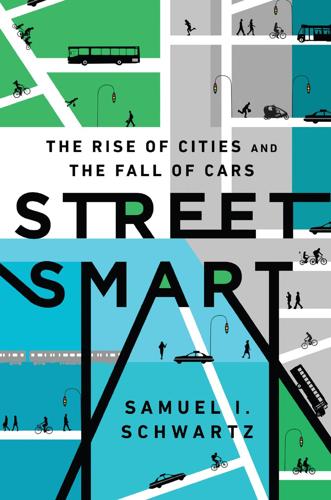
Street Smart: The Rise of Cities and the Fall of Cars
by
Samuel I. Schwartz
Published 17 Aug 2015
After Judge John Ferguson ruled that Plessy had to pay a fine for his presumption, the appeals that followed ended up in the US Supreme Court. When the Court handed down its decision in Plessy v. Ferguson, it upheld the constitutionality of “white” and “colored” sections, enshrining the concept of “separate but equal” facilities for whites and African Americans for the first half of the twentieth century. Five decades later, Rosa Parks refused to take a seat in the back of a public bus in Montgomery, Alabama, igniting the yearlong boycott that was ended by another Supreme Court decision, this time desegregating the city’s buses and consequently public transit throughout the United States. Over and over again, access to public transportation and the promotion of social equality have been joined together at the hip.

Alpha Girls: The Women Upstarts Who Took on Silicon Valley's Male Culture and Made the Deals of a Lifetime
by
Julian Guthrie
Published 15 Nov 2019
These women share a determination with Alpha Girls everywhere, transcending vocation and location, working in Hollywood, academia, economics, advertising, politics, the media, sports, automobiles, agriculture, law, hospitality, restaurants, and the arts. History is rich with women rebels who have shined a spotlight from the outside—women such as Rosa Parks, whose one defiant act became synonymous with the civil rights movement. But it is also rife with what one academic calls “tempered radicals,” those who learn to play the game to perfection—whatever the game is—before trying to change the rules. Margaret Thatcher took elocution lessons to deepen her voice, to better be heard.
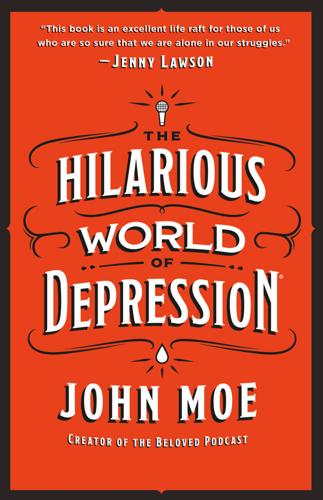
The Hilarious World of Depression
by
John Moe
Published 4 May 2020
In the cold harsh light of thirty-plus years later, I know for a fact that I must have been awful as Atticus. There’s simply no other possibility. In an almost entirely white school and mostly white town, I had never thought about what race really meant in America, especially in the South. I knew racism was bad, knew that Martin Luther King Jr. and Rosa Parks were good, that King Had a Dream, but that was mostly it. Further, I couldn’t find a way to access the gravity of that character, both who he was and the situation he was in, so instead I compensated by copying Gregory Peck from the movie. In the third and final performance of the play, I managed to get myself so worked up in the courtroom scene, barking out aphorisms I had memorized but never pondered, that I sweated a little.

Everything's Trash, but It's Okay
by
Phoebe Robinson
Published 15 Oct 2018
.* Suffice it to say that after this trifling-ass week, I deleted my Tinder account, but still, I must ask: What in United Colors of Benetton is this fucking fuckery? If y’all dumb heauxes cannot tell that I am black AF and/or are hoping I’m mixed with something so I’m low-cal black, y’all can choke on the peacoat Rosa Parks wore when she told that white dude, “It’s gonna be a ‘no’ from me, dawg”—#Callback—and stayed her behind in the front of the bus. Unfortunately, this background check is all too familiar with every single black woman I know. We’ve heard time and time again that black women and Asian men get asked out the least on dating apps.
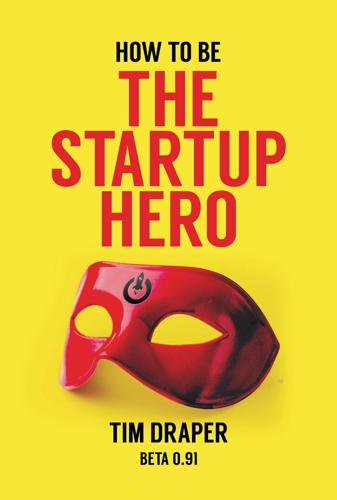
How to Be the Startup Hero: A Guide and Textbook for Entrepreneurs and Aspiring Entrepreneurs
by
Tim Draper
Published 18 Dec 2017
George Washington Conformity is the jailer of freedom and the enemy of growth. John F. Kennedy If you're not ready to die for it, put the word 'freedom' out of your vocabulary. Malcolm X I would like to be remembered as a person who wanted to be free so other people would be also free. Rosa Parks Money won't create success, the freedom to make it will. Nelson Mandela Some people get rich first. Deng Xiaoping Freedom is never more than one generation away from extinction. We didn't pass it to our children in the bloodstream. It must be fought for, protected, and handed on for them to do the same.
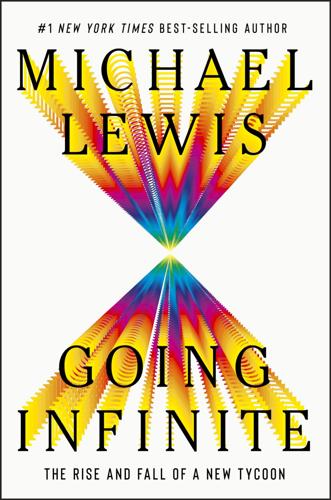
Going Infinite: The Rise and Fall of a New Tycoon
by
Michael Lewis
Published 2 Oct 2023
He began by noting how few marketing campaigns had had the effect that he hoped to achieve with FTX’s. He counted only three: Yes we can: Barack Obama Just do it: Nike. Lots of athletes but there are two who made the brand what it is: Michael Jordan and Tiger Woods Think different: Apple. Albert Einstein, John Lennon, MLK, Muhammad Ali, Rosa Parks, Gandhi, Alfred Hitchcock etc. The crypto crowd was overwhelmingly young and male, and so it seemed obvious to use sports celebrities to win their love and trust. But even within the narrow world of sports, what people paid attention to struck Sam as arbitrary. For example, in the United States, everyone knew and cared about the names of the companies on their stadiums, but no one knew or cared about the names of the companies on their players’ jerseys.
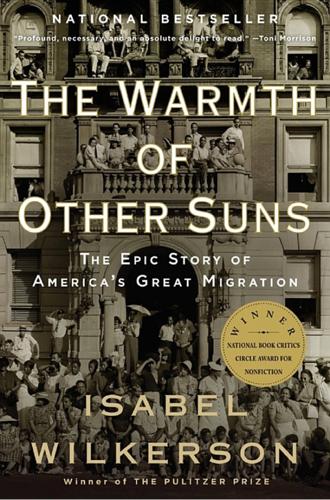
The Warmth of Other Suns: The Epic Story of America's Great Migration
by
Isabel Wilkerson
Published 6 Sep 2010
He did much of this work as a volunteer, driving alone in the backwoods and small towns of Florida, “where no restaurant would serve him, no motel would house him, and some gas stations wouldn’t let him fill his tank, empty his bladder or even use the phone,” his biographer Ben Green wrote.122 These were the dark early days of the civil rights movement, before it even had a name: Martin Luther King, Jr., was still in grade school, Rosa Parks was a young bride, and the NAACP was an underground organization in the South.123 It was still building a base there among its fearful constituents, and segregationists were viewing it as an uppity troublemaker meddling in the private affairs of the southern order of things. It took courage even to be associated with it in those days, let alone be its field secretary in one of the most violent states in the South.
…
The biggest standoffs came between the groups with the most in common, save race: the working-class white immigrants and the working-class black migrants, both with similar backgrounds and wanting the same thing—good jobs and a decent home for their families—but one group not wanting to be anywhere near the other and literally willing to fight to the death to keep the other out. It was a chilling parallel to the war playing out at the very same time in the South, from the arrest of Rosa Parks in 1955 for refusing to give up a bus seat in Alabama to white troops blocking nine colored students in 1957 on their first day of school in Little Rock, Arkansas, after the Supreme Court said they had the right to enroll. After World War II, Chicago, Detroit, Cleveland, and other northern and western cities would witness a fitful migration of whites out of their urban strongholds.
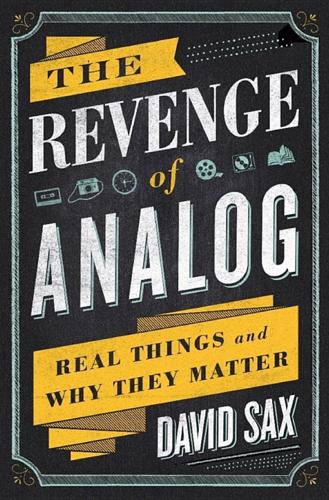
The Revenge of Analog: Real Things and Why They Matter
by
David Sax
Published 8 Nov 2016
A sold-out crowd of nearly a hundred people in their twenties and early thirties gathered under a ceiling covered in thousands of spent lightbulbs for an event called Stack Live. Steven Watson, creator of the independent magazine subscription service Stack, hosted a monthly Q&A with the creator of whatever magazine Stack distributed that month. Tonight, Watson was interviewing Rosa Park, the extremely verbose American cocreator of the biannual Cereal, which was a fast-rising star of the country’s independent magazine publishing scene. Park was born in Seoul, grew up in Vancouver, and worked in fashion marketing in New York before she moved to Bath, England, for a master’s degree.
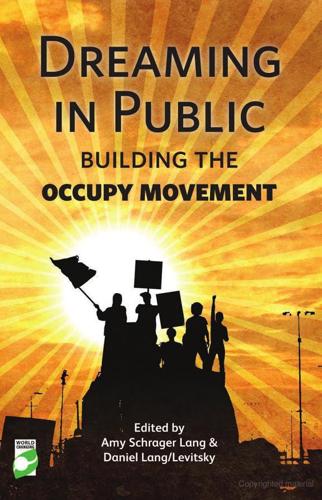
Dreaming in Public: Building the Occupy Movement
by
Amy Lang
and
Daniel Lang/levitsky
Published 11 Jun 2012
From 1960 to 1967 or 1968, the Student Nonviolent Coordinating Committee (SNCC) and Students for a Democratic Society (SDS) professed belief in nonviolence and in what we called ‘participatory democracy’. We believed that we are all leaders, and, although we did not use the term, our practice expressed horizontalism. We sought to influence each other by exemplary action rather than by ideological harangue. History, it seemed to us, might come about because Rosa Parks refused to go to the back of a bus, because four young men ‘sat in’ at a segregated lunch counter, or because David Mitchell refused to be drafted for a war in Vietnam that he considered a war crime. The Occupy movement exhibits these same characteristics to an astonishing degree. Who would have believed that this ‘structure of feeling’ could reappear after SNCC and SDS crashed and burned in the late Sixties?
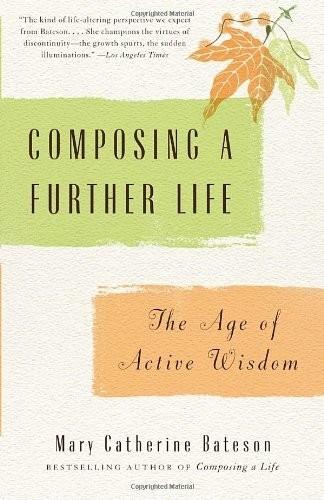
Composing a Further Life: The Age of Active Wisdom
by
Mary Catherine Bateson
Published 13 Sep 2010
So it was a very, very stimulating and exciting place.” Individual clergy and laypeople had been involved from the beginning of the civil rights movement, but institutional responses were slower. The Urban Training Center was created a decade after the Supreme Court declared school segregation unconstitutional in 1954. Rosa Parks had triggered the Montgomery bus boycott in 1955 by refusing to accept bus segregation, and the Southern Christian Leadership Conference was founded in 1957, the same year that Little Rock public schools were desegregated under the eye of the National Guard. By 1960 the focus had shifted to voter registration and a push for legislative change, with the March on Washington in August 1963, when Dr.
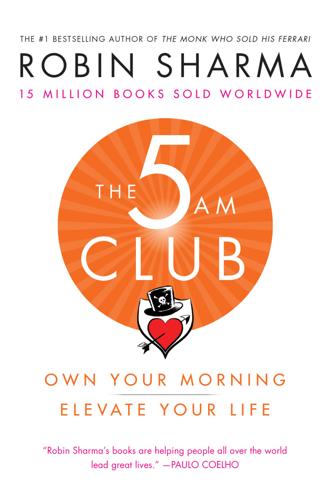
The 5 AM Club: Own Your Morning. Elevate Your Life.
by
Robin Sharma
Published 4 Dec 2018
A major key to happiness—and internal peace—is knowing you’ve done whatever it took to earn your rewards and passionately invested the effortful audacity to become your best. Jazz legend Miles Davis stretched himself ferociously past the normal his field knew to fully exploit his magnificent potential. Michelangelo sacrificed enormously mentally, emotionally, physically and spiritually as he produced his awesome art. Rosa Parks, a simple seamstress with outstanding courage, endured blunt humiliation when she was arrested for not giving up her seat on a segregated bus, igniting the civil rights movement. Charles Darwin demonstrated the kind of resolve that virtuosity demands by studying barnacles—yes, barnacles—for eight long years as he formulated his famed Theory of Evolution.
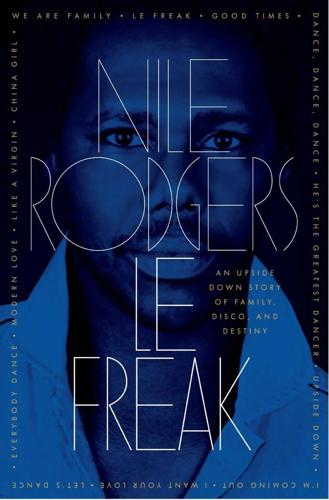
Le Freak: An Upside Down Story of Family, Disco, and Destiny
by
Nile Rodgers
Published 17 Oct 2011
Nora more than any force on earth is responsible for the turbo-charged development of Bev’s personality and values. She was very different from Goodie. Lenora had a classical education, was well versed in Latin and extremely bright. She was like Josephine Baker meets Clarence Darrow, with Pearl Bailey and a little Rosa Parks sprinkled on top. She was a tough cookie and had an unmatched instinct for survival. She took Beverly under her wing as her apprentice. And Beverly was starstruck around Nora—this was no ordinary mother-in-law. Nora taught my mother how to use men. She did not censor her feelings or her philosophy.
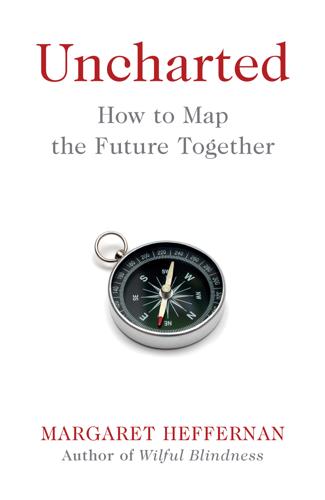
Uncharted: How to Map the Future
by
Margaret Heffernan
Published 20 Feb 2020
The Russians saw Russian history in the Arab Spring, with Medvedev fearing that, like the fall of the Berlin Wall, these demonstrations would prove destabilising for Russia.13 Meanwhile, President Obama likened it to the Boston Tea Party and the beginning of America’s war for independence, drawing analogies too with the civil rights protest of Rosa Parks.14 Everyone saw themselves in these events. So they felt confident they knew where they would lead and how they would end. The reliance on analogies implied inevitability: just like the fall of the Berlin Wall or the Boston Tea Party, the demonstrations would usher in a new era of democratic freedoms.
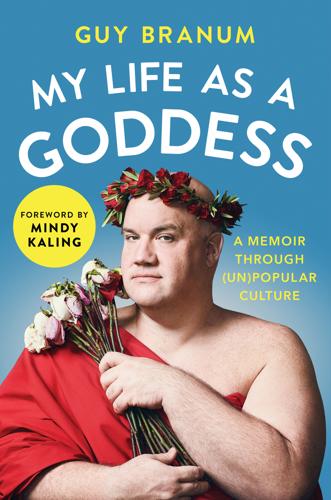
My Life as a Goddess: A Memoir Through (Un)Popular Culture
by
Guy Branum
Published 29 Jul 2018
Read John Ralston Saul’s excellent book Extraordinary Canadians: Louis-Hippolyte Lafontaine and Robert Baldwin for actual history. This is mostly me telling cocktail-party stories. Winter makes it more dramatic. 21. I really handled this Toronto/York thing poorly. I should have established this earlier in the chapter. I feel like we’re stuck calling it Toronto now. 22. She’s the Rosa Parks of Canada! She’s on the Canadian ten-dollar bill. 23. His name is Terry Fox and they fucking love him. FOOTBALLWALLAH I WAS INFORMED I was to play football. I don’t know what I was doing at the end of my time in junior high, but I would imagine fantasy novels and rule books for role-playing games I did not have friends to play with were key.

Keeping at It: The Quest for Sound Money and Good Government
by
Paul Volcker
and
Christine Harper
Published 30 Oct 2018
Obama Like so many others, I was caught up in late 2007 and early 2008 by a sense of frustration about the path of the country and its leadership. Hope for the future was epitomized by the sudden appearance on the political scene of the young Barack Obama. His very presence in the chase for the presidency seemed to substantiate the dreams of racial equality once expressed in Rosa Parks’s Alabama bus ride and Martin Luther King’s “I Have a Dream” speech at the Lincoln Memorial. The potential seemed to extend to practical problems of governance made critical by the financial crisis. I agreed to join a small dinner arranged by the Obama campaign in Washington with interested but skeptical Wall Streeters.

Mindf*ck: Cambridge Analytica and the Plot to Break America
by
Christopher Wylie
Published 8 Oct 2019
Shared experience is the fundamental basis for solidarity among citizens in a modern pluralistic democracy, and the story of the civil rights movement is, in part, the story of being able to share space together: being in the same part of the movie theater or using the same water fountain or bathroom. Segregation in America has always manifested itself in insidiously mundane ways—through separate bus seats, water fountains, schools, theater tickets, and park benches. And perhaps now on social media. For Rosa Parks, being ordered to give up her bus seat was just one of the countless ways white America systematically ensured that her dark skin was separated and unseen—that she remained the other, not part of their America. And although we no longer allow buildings to segregate their entrances based on a guest’s race, segregation rests at the heart of the architectures of the Internet.
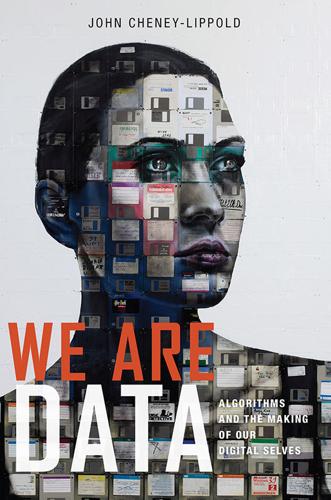
We Are Data: Algorithms and the Making of Our Digital Selves
by
John Cheney-Lippold
Published 1 May 2017
Without this privacy, Facebook could likely fail as a business. So yes, I agree, privacy is important for it. But this “very important” privacy is the kind that’s already dead. In the way that governments and conservative ideology co-opt many radical historical figures after their demise (Martin Luther King, Jr., Rosa Parks, Cesar Chavez), the privacy that Facebook cares about is a privacy that has no teeth. It’s a privacy that might keep your disreputable photos away from your boss, but that’s not really privacy, is it? For me, that’s just adequate site architecture. We couldn’t imagine an architect patting herself on the back because she remembered to put walls between rooms, much less acclaiming how “important” privacy is to her because there isn’t a gaping hole between the bathroom and kitchen.

Holdout: A Novel
by
Jeffrey Kluger
Published 2 Aug 2021
“Not now,” Sonia said. “Not for a while.” CHAPTER EIGHT Beckwith had known there would be a great deal of noise from a great many people all over Washington and the media about what she had done, but she had not quite imagined the white-hot blast of it. She was alternately compared to Benedict Arnold, Rosa Parks, Ethel Rosenberg, Eleanor Roosevelt, Axis Sally, and Susan B. Anthony. She got two Lizzie Bordens from an elderly couple interviewed on TV in a Springfield, Massachusetts, diner, as well as numerous Joan of Arcs on numerous college campuses—which was inevitable. The more measured members of the media—especially the science and legal reporters—took a more cool-headed approach.

1,000 Places to See in the United States and Canada Before You Die, Updated Ed.
by
Patricia Schultz
Published 13 May 2007
Where History Was Made CIVIL RIGHTS TRAIL Montgomery, Selma, and Birmingham, Alabama Alabama was at the violent forefront of the nation’s civil rights movement in the late 1950s and ’60s. Tourists today make pilgrimages to places such as Montgomery, Selma, and Birmingham, where bombings, riots, and peaceful protests galvanized the nation—and profoundly changed the world. Begin your journey in the state capital of Montgomery, where the Rosa Parks Library and Museum recounts the courageous act of defiance by the Montgomery seamstress who, in 1955, refused to give up her seat on the city bus to a white man. Exhibits and interactive displays narrate her arrest and the watershed Montgomery Bus Boycott the following year that lasted for 381 days, eventually leading to the ban of segregation on all public transportation and intrastate buses.
…
Across the street lies Kelly Ingram Park, which was a protest assembly point and the scene of vicious attacks during the first week of May 1963, when police unleashed guard dogs and water hoses on men, women, and even children who were protesting segregation. Statues, plaques, and an audio tour (available at the Civil Rights Institute) honor the demonstrators’ bravery. CIVIL RIGHTS TRAIL: Tel 800-ALABAMA or 334-242-4169; www.800alabama.com. ROSA PARKS LIBRARY AND MUSEUM: Montgomery. Tel 334-241-8615; http://montgomery.troy.edu/rosaparks/museum. When: closed Sun. CIVIL RIGHTS MEMORIAL CENTER: Tel 334-956-8200; www.splcenter.org. When: closed Sun. SELMA TO MONTGOMERY MARCH: www.byways.org. BIRMINGHAM CIVIL RIGHTS INSTITUTE: Tel 205-328-9696; www.bcri.org.
…
Louis Arts Museum, Mo., 460–61 Speed Art Museum, Ky., 416 Truman Presidential Museum and Library, Mo., 451 Walking Horse Museum, Tenn., 478 New England Aldrich Contemporary Art Museum, Conn., 9 American Museum of Fly Fishing, Vt., 102 American Textile History Museum, Mass., 59 Billings Farm and Museum, Vt., 110 Bruce Museum, Conn., 6 Connecticut River Museum, Conn., 8 Conservation Center Museum, Conn., 14 Enfield Shaker Museum, N.H., 70 Farnsworth Museum, Maine, 34–35 Florence Griswold Museum, Conn., 6 Fogg Art Museum, Mass., 47 Hill-Stead Museum, Conn., 6 Hood Museum, N.H., 73 Isabella Stewart Gardner Museum, Mass., 43–44 Lighthouse Museum, Maine, 25 Maine Maritime Museum, Maine, 25 Mark Twain House and Museum, Conn., 12–13 Mashantucket Pequot Museum, Conn., 11 Mass MoCA, Mass., 63 Monhegan Historical and Cultural Museum, Maine, 27 Museum of Fine Arts, Mass., 44–45 Museum of Yachting, R.I., 89 New Bedford Whaling Museum, Mass., 64 New Britain Museum of American Art, Conn., 6 New England Quilt Museum, Mass., 59 Norman Rockwell Museum, Mass., 52 Ogunquit Museum, Maine, 32 Peabody Essex Museum, Mass., 65 Penobscot Marine Museum, Maine, 33 RISD Museum of Art, R.I., 90 Salem Witch Museum, Mass., 65 Shelburne Museum, Vt., 105 Strawbery Banke Museum, N.H., 80 Wadsworth Atheneum, Conn., 13–14 Whaling Museum, Mass., 62 Williams College Museum of Art, Mass., 68 Yale Art Gallery, Conn., 18 Yale Center for British Art, Conn., 18 Southeast Ackland Art Museum, N.C., 361 Asheville Art Museum, N.C., 355 Barber Vintage Motorsports Museum, Ala., 301 Cameron Art Museum, N.C., 373 Charleston Museum, S.C., 378 Colburn Earth Science Museum, N.C., 355 Dahlonega Gold Museum Historic Site, Ga., 340 Fayette Art Museum, Ala., 299 Flagler Museum, Fla., 325 Hay House, Ga., 346 High Museum of Art, Ga., 336, 347 Lightner Museum, Fla., 327 Museum of Early Southern Decorative Arts, N.C., 374 Museum of the Cherokee Indian, N.C., 365 Nasher Museum, N.C., 362 North Carolina Maritime Museum, N.C., 366 Old St. Augustine Village Museum, Fla., 327 Reynolda House Museum of American Art, N.C., 375 Rice Museum, S.C., 385 Rosa Parks Library and Museum, Ala., 297 Salvador Dalí Museum, Fla., 328–29 Shell Museum, Fla., 326 Telfair Museum, Ga., 350 Tybee Island Light Station and Tybee Museum, Ga., 353 Villa Vizcaya, Fla., 313 Wolfsonian, Fla., 319 West Coast Asian Art Museum, Calif., 848 California Railroad Museum, Calif., 809 Children’s Museum, Wash., 899 Columbian River Maritime Museum, Oreg., 866 de Young Museum, Calif., 845, 847 Discovery Museum, Calif., 809 Flavel Museum, Oreg., 865 Huntington Library and Gardens, Calif., 839 Kam Wah Chung & Co.
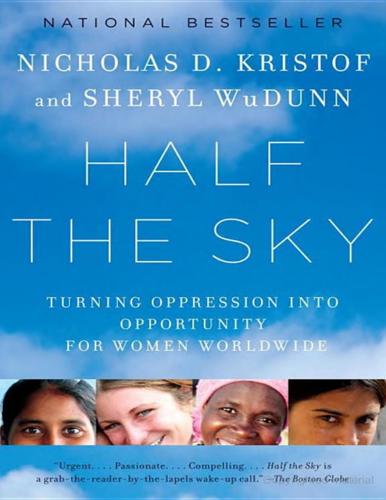
Half the Sky: Turning Oppression Into Opportunity for Women Worldwide
by
Nicholas D. Kristof
and
Sheryl Wudunn
Published 7 Sep 2008
CHAPTER FOURTEEN What You Can Do You must be the change you wish to see in the world. —MAHATMA GANDHI Americans knew for decades about the unfairness of segregation. But racial discrimination seemed a complex problem deeply rooted in the South’s history and culture, and most good-hearted people didn’t see what they could do about such injustices. Then along came Rosa Parks and Martin Luther King Jr. and the Freedom Riders, along with eye-opening books like John Howard Griffin’s Black Like Me. Suddenly the injustices were impossible to look away from, at the same time that economic change was also undermining Jim Crow. One result was a broad civil rights movement that built coalitions, spotlighted the suffering, and tore away the blinders that allowed good people to acquiesce in racism.

Lonely Planet's Best of USA
by
Lonely Planet
Rather than invade the country, President Harry Truman chose to drop experimental atomic bombs (created by the government’s top-secret Manhattan Project) on Hiroshima and Nagasaki in August 1945, destroying both cities. Japan surrendered, but the nuclear age was born. The Civil Rights Movement From the 1950s, a movement got under way in African American communities to fight for equality. Rosa Parks, who refused to give up her seat to a white passenger on a bus, inspired the Montgomery bus boycott. There were sit-ins at lunch counters where blacks were excluded; massive demonstrations led by Martin Luther King Jr in Washington, DC; and harrowing journeys by ‘freedom riders’ aiming to end bus segregation.

Origins: How Earth's History Shaped Human History
by
Lewis Dartnell
Published 13 May 2019
Several million African-Americans migrated from rural areas in the southern states to the major industrial cities of the north-eastern and midwestern United States, especially after the Great Depression of the 1930s. Yet the largest populations of African-Americans remained in the regions where they had the greatest initial density: the historical ‘Black Belt’ of fertile soils. After the Second World War the ‘Black Belt’ therefore formed the heartlands of the civil rights movement. Rosa Parks refused to give up her bus seat to a white traveller in December 1955 in the city of Montgomery, Alabama, smack in the middle of this curving strip of 75-million-year-old Cretaceous rocks. Even today, virtually all the counties in the US with the highest proportion of African-Americans lie along this same arc within the south-east.60 Persisting after many African-Americans had migrated north and west, these populations are almost like an erosional remnant staying in place after the economic tide has swept millions elsewhere.

We Are All Fast-Food Workers Now: The Global Uprising Against Poverty Wages
by
Annelise Orleck
Published 27 Feb 2018
“I was born in Long Beach, raised in Long Beach, and I will fight for its survival.” Besides, organizing feels natural to her. “I talk to my friends at McDonald’s. I talk to my friends at Burger King. We are going to push for this—march, testify—until we get our rights.” Learning history has given her courage. “My heroes are Malcolm X, Rosa Parks,” she says. “Rosa was strong. I want to be like that.” She pulls herself up to her full height of five feet two, then pumps her fist in the air. “I want to be like our conductor of the Underground Railroad, Harriet Tubman. I want to meet the president.” She recently learned that Tubman met Abe Lincoln.

Nuclear War: A Scenario
by
Annie Jacobsen
Published 25 Mar 2024
GO TO NOTE REFERENCE IN TEXT “should deter”: Sebastien Roblin, “Ohio-Class: How the U.S. Navy Could Start a Nuclear War,” 19FortyFive, December 3, 2021. GO TO NOTE REFERENCE IN TEXT Richard Garwin warns: Interview with Richard Garwin. GO TO NOTE REFERENCE IN TEXT speck of dust: Rosa Park, ed., “Kim Family Regime Portraits,” HRNK Insider, Committee for Human Rights in North Korea, 2018. GO TO NOTE REFERENCE IN TEXT defector Yeonmi Park: “The Joe Rogan Experience #1691, Yeonmi Park,” The Joe Rogan Experience podcast, August 2021. GO TO NOTE REFERENCE IN TEXT Malnutrition is commonplace: Ifang Bremer, “3 Years into Pandemic, Fears Mount That North Korea Is Teetering toward Famine,” NK News, February 15, 2023.
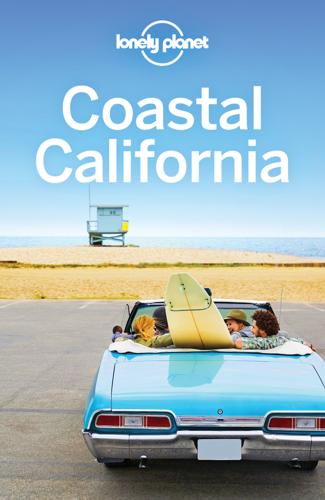
Coastal California Travel Guide
by
Lonely Planet
ABlue Line Light-rail line running from Downtown to Long Beach; connects with the Red and Expo Lines at 7th St/Metro Center station and the Green Line at Willowbrook/Rosa Parks station. AGold Line Light-rail line running from East LA to Little Tokyo/Arts District, Chinatown and Pasadena via Union Station, Mt Washington and Highland Park; connects with the Red Line at Union Station. AGreen Line Light-rail service between Norwalk and Redondo Beach; connects with the Blue Line at Willowbrook/Rosa Parks. AOrange Line Express bus linking the west San Fernando Valley to North Hollywood, from where the Red Line subway shoots south to Hollywood and Downtown LA.

Radicals Chasing Utopia: Inside the Rogue Movements Trying to Change the World
by
Jamie Bartlett
Published 12 Jun 2017
‘It is through disobedience and rebellion that progress has been made.’ Radicalism is the source of new ideas, renewal and change. The list of outspoken radicals dismissed for being impractical or dangerous at the time, but whom modern society now extols, is extremely long: John Lilburne, John Stuart Mill, Rosa Parks, Thomas Paine, Emmeline Pankhurst, Harvey Milk, Martin Luther King, and on and on. Ought we be so sure we’ve got it all figured out? That our way of living is the best one, and that alternatives could never work? It often takes outsiders to suggest that another world is possible. Even if they are not completely right—no single idea ever is—they are often half right.

Mbs: The Rise to Power of Mohammed Bin Salman
by
Ben Hubbard
Published 10 Mar 2020
Others defied their families to take part. At the time, there was no law explicitly barring women from driving, only a social convention enforced by the authorities, so the group made sure that all the drivers had valid foreign licenses so the government could not accuse them of breaking the law. If the protest had a whiff of Rosa Parks, the women were more Elizabeth Cady Stanton. Many hailed from elite families and had been educated abroad, where they had gotten used to living without Saudi strictures and learned to drive. Most were working professionals, with jobs as teachers, administrators, and university instructors. One was a social worker.

The Big Book of Words You Should Know: Over 3,000 Words Every Person Should Be Able to Use (And a Few That You Probably Shouldn't)
by
David Olsen
,
Michelle Bevilacqua
and
Justin Cord Hayes
Published 28 Jan 2009
eon (EE-on), noun A very long, indefinite period of time; seemingly forever; a span of time beyond comprehension. (In the disciplines of geometry and astronomy, however, eons have specific durations.) After what felt like several EONS, the tow truck finally arrived and we were able to haul our car back to the campground. epic (EP-ik), adjective Of major proportions; extraordinary. Rosa Park’s refusal to go to the back of the bus would take on legendary status in the EPIC struggle for civil rights. epilepsy (EP-ih-lep-see), noun A condition characterized by seizures and tremblings resulting from abnormal rhythmic impulses in the brain. Researchers believe that many of the “demonic possessions” recounted in the Bible were actually instances of EPILEPSY.

The Birth of the Pill: How Four Crusaders Reinvented Sex and Launched a Revolution
by
Jonathan Eig
Published 12 Oct 2014
The black women from the Deep South, the immigrant women, and the college women considering careers outside the home had something in common: they recognized that the pursuit of opportunity required independence, and achieving that independence meant avoiding—or at least postponing—motherhood. In the 1950s, women were voting in roughly equal numbers to men for the first time in American history. The radical feminist movement of Margaret Sanger’s youth was gone, but other forms of rebellion were taking root. In the South, women like Rosa Parks, Septima Clark, and Ella Baker helped spark the civil rights movement. In factory towns and in cities, women became union activists. When they married or when they had children and wished not to have more, women turned to doctors, priests, and even newspaper columnists for advice, and they did so without the same degree of shame their mothers would have felt.

The People vs. Democracy: Why Our Freedom Is in Danger and How to Save It
by
Yascha Mounk
Published 15 Feb 2018
At times when most Americans were unwilling to grant the rights they claimed for themselves to a horrifically mistreated minority, it was the Supreme Court that stepped in. The end of segregation was brought about not by the will of the American people but rather by an institution that had the constitutional power to override it. When we think of the civil rights movement, we tend to think of the brave acts of ordinary citizens, from Rosa Parks to James Hood. And yet its history was just as much one of liberal decisions won against the resistance of electoral majorities.47 There can be no doubt that many of the most important advances for the rights of US citizens were handed down from a judicial bench. There can also be no doubt that nine unelected judges hold a vast amount of power—and that there is at least a reasonable case that they have become more willing to exercise that power over the course of the twentieth century.48 Since 1954, the Supreme Court has ended segregation in schools and universities.49 It has ended and then reintroduced the death penalty.50 It has legalized abortion.51 It has limited censorship on television and radio.52 It has decriminalized homosexuality and instituted same-sex marriage.53 It has struck down campaign finance regulations and gun control measures.54 It has determined whether millions of people would get health insurance55 and whether millions of “Dreamers” needed to live in fear of being deported.56 That’s why the American right has long railed against activist judges while the American left, which enjoyed a majority on the court for much of the postwar era, has long claimed that judges were merely doing their job.

Work Won't Love You Back: How Devotion to Our Jobs Keeps Us Exploited, Exhausted, and Alone
by
Sarah Jaffe
Published 26 Jan 2021
Ali’s fight reminded everyone that athletes—and Black athletes, in particular—were thinking, breathing humans, not simply bodies to be traded around by their wealthy bosses. 23 The stand of John Carlos and Tommie Smith on that podium is often remarked upon, but we hear less often about the organizing that went on behind the scenes to create that moment. Like Rosa Parks, Carlos and Smith are discussed as if their protest were spontaneous, but it was the result of athletes realizing that their labor power—and potentially the withholding of it—could be a powerful tool. The Olympic Project for Human Rights (OPHR) was formed by amateur Black athletes and at first aimed for a boycott of the 1968 Games.

How to Murder Your Life: A Memoir
by
Cat Marnell
Published 30 Jan 2017
It’s one of my favorite places in DC. It’s, like, three town houses combined, and full of secret passages and hidden stairwells and walls that open into other rooms—like in a murder mystery movie! And there’s a log cabin duplex on top, and all these other themed rooms; every item in the place is for sale, even the toilet paper. Rosa Parks lived there. Anyway, there’s a pool out back in the garden, and that’s where we partied that first day. I took shots and fell into the pool in the back garden à la Brian Jones (and not in a cool way). I woke up on a leather sofa in a basement recording studio next to a boy drinking an Amstel Light.

Stolen Focus: Why You Can't Pay Attention--And How to Think Deeply Again
by
Johann Hari
Published 25 Jan 2022
So Ben told me the very first step to building a movement is to create a “consciousness-raising breakthrough cultural moment, where people go—‘Shit, my brain’s been frazzled by this stuff. It’s why I don’t have some of the pleasures in life I used to have.’ ” How do we do that? The ideal tool, he said, is what he calls “a site battle.” This is where you choose a place that symbolizes the wider struggle, and begin a nonviolent fight there. An obvious example is Rosa Parks taking her seat on a bus in Montgomery, Alabama. Think, he said, about how we did it with coal. Man-made global warming is a rapidly unfolding disaster, but—like our attention crisis—it can easily seem pretty abstract, and far away, and hard to get a handle on. Even once you do understand it, it can seem so huge and overwhelming that you are often left feeling powerless to do anything.

Behave: The Biology of Humans at Our Best and Worst
by
Robert M. Sapolsky
Published 1 May 2017
I sniped that it was ridiculous that many legislators needed pictures of the brain to believe that there was something desperately, organically wrong with veterans with PTSD. Similarly, neuroplasticity makes the functional malleability of the brain tangible, makes it “scientifically demonstrated” that brains change. That people change. In the time span considered in this chapter, people throughout the Arab world went from being voiceless to toppling tyrants; Rosa Parks went from victim to catalyst, Sadat and Begin from enemies to architects of peace, Mandela from prisoner to statesman. And you’d better bet that changes along the lines of those presented in this chapter occurred in the brains of anyone transformed by these transformations. A different world makes for a different worldview, which means a different brain.
…
One Person Somewhere between neurons, hormones, and genes on one hand and culture, ecological influences, and evolution on the other, sits the individual. And with more than seven billion of us, it’s easy to feel that no single individual can make much of a difference. But we know that’s not true. There’s the obligatory list of those who changed everything—Mandela, Gandhi, MLK, Rosa Parks, Lincoln, Aung San Suu Kyi. Yes, they often had scads of advisers. But they were the catalysts, the ones who paid with their freedom or their lives. And there are whistle-blowers who took great risks to trigger change—Daniel Ellsberg, Karen Silkwood, W. Mark Felt (Watergate’s Deep Throat), Samuel Provance (the U.S. soldier who revealed the abuses at Abu Ghraib Prison), Edward Snowden.* But there are also lesser-known people, acting alone or in small numbers, with extraordinary impact.

Before the Storm: Barry Goldwater and the Unmaking of the American Consensus
by
Rick Perlstein
Published 17 Mar 2009
Every side in these contests was represented in the burbling confluence of irreconcilables at Bancroft and Telegraph—sometimes two, even three factions jostling on each: lefties, liberal to Trotskyite to Maoist to Castroist; righties from Republican to anarchist. The myriad conservative groups—YAF, Young Republicans, Conservatives at Large (CAL), Cal Students for Goldwater, and the University Society of Individualists—were well stocked with hellions: a University Society of Individualists member sporting an “I AM A RIGHT-WING EXTREMIST” pin became the Rosa Parks of the San Francisco streetcars when she flamboyantly defied the unwritten rule against women standing on the running boards and caused such a disturbance that she ended up getting arrested. Berkeley political scientist Seymour Martin Lipset thought he understood what made youngsters so prone to an inappropriate overabundance of political commitment: a “relative lack of experience with the conflicting pressures derivative from varying value obligations or role demand.”
…
The salty high-desert rebel and nightclub habitué certainly hadn’t complained when Goldwater Girls in bikinis passed the collection plate at one of his rallies in Beverly Hills back in May. One faction of conservatives, in fact, “libertarians”—exemplified by the YAFers who put their founding convention at loggerheads by decrying the Sharon Statement’s reference to God and the Berkeley co-ed who was the Rosa Parks of the trolley-car running boards—defined their political identity by their live-and-let-live attitude on moral questions. Republicans were the party of Middle American piety. But America was a pious country. God talk on the stump wasn’t so much political as pro forma; at the governors’ conference in Cleveland there was hardly a peep of opposition to a resolution in favor of a school prayer amendment to the Constitution.

Microtrends: The Small Forces Behind Tomorrow's Big Changes
by
Mark Penn
and
E. Kinney Zalesne
Published 5 Sep 2007
And it touched a deep chord with native-born Americans who are deeply tied to the illegals—like their children. (When I asked a Latino immigration expert how many American-born Latinos have parents who came here illegally, he said, “Practically everyone.”) Suddenly, in 2006, a significant group of Americans was insulted—some say as deeply as when Rosa Parks was asked to move to the back of the bus. And they have turned that indignation into a sense that they can and must influence the course of immigration policy, and beyond. The number of people feeling that way could be big enough to tip a presidential election. Let’s look at the figures. In the presidential election of 2004, just over 16 million Hispanics were eligible to vote, but only about 8 million did.
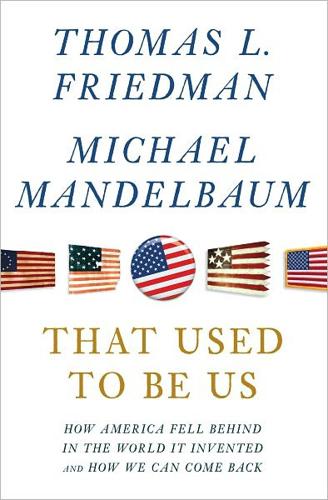
That Used to Be Us
by
Thomas L. Friedman
and
Michael Mandelbaum
Published 1 Sep 2011
For all our ailments as a country today, our society and economy are still the most open in the world, where individuals with the spark of an idea, the gumption to protest, or the passion to succeed can still get up, walk out the door, and chase a rainbow, lead a crusade, start a school, or open a business. “Show me an obstacle and I will show you an opportunity” is still the motto of many, many Americans, be they business entrepreneurs or civic and charitable entrepreneurs. So Rosa Parks just got on that bus and took her seat; so new immigrants just went out and started 25 percent of the new companies in Silicon Valley in the last decade; so college dropouts named Steve Jobs, Michael Dell, Bill Gates, and Mark Zuckerberg just got up and created four of the biggest companies in the world.

On the Move: Mobility in the Modern Western World
by
Timothy Cresswell
Published 21 May 2006
While speaking to members of the Bus Riders Union in Los Angeles (see chapter 6) it was frequently observed how transport planners sought to dissociate transit from race. The Bus Riders Union response was that they could not be so easily dissociated. In the United States the politics of race and the politics of mobility (particularly public transit provision) have moved side by side through the civil rights movement. Think of Jim Crow. Think of Rosa Parks. The population of New Orleans that was left behind were indeed the transit dependent, but they were overwhelmingly black. In the New Orleans metropolitan area, only 5 percent of non-Hispanic white people did not have access to an automobile. For the black population, the figure was 27 percent.6 The elderly and the very young were similarly transit dependent.
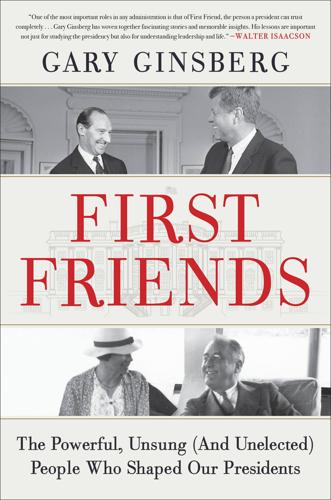
First Friends: The Powerful, Unsung (And Unelected) People Who Shaped Our Presidents
by
Gary Ginsberg
Published 14 Sep 2021
Henry Louis Gates, the celebrated Harvard literary critic, credits Jordan as the man most responsible for breaking down the color barrier in corporate America: “Vernon did more to integrate the corridors of power on Wall Street than any other Black leader. Historians will remember Vernon Jordan as the Rosa Parks of Wall Street.” Despite his coziness with big business, Jordan also spoke his mind when he sensed that his corporate patrons were reneging on their responsibilities to the Black community. One day in the late 1970s, Jordan was in Florida to deliver a speech before the New York Savings Association.
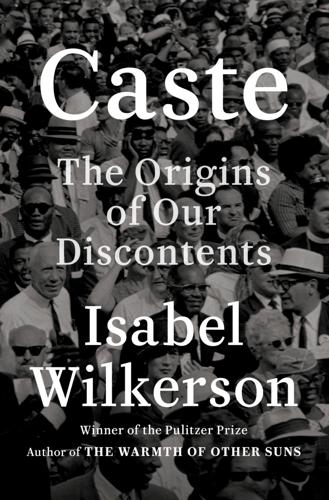
Caste: The Origins of Our Discontents
by
Isabel Wilkerson
Published 14 Sep 2020
“As a social and human division,” wrote the political scientist Andrew Hacker of the use of physical traits to form human categories, “it surpasses all others—even gender—in intensity and subordination.” CHAPTER THREE An American Untouchable In the winter of 1959, after leading the Montgomery bus boycott that arose from the arrest of Rosa Parks and before the trials and triumphs to come, Martin Luther King, Jr., and his wife, Coretta, landed in India, in the city then known as Bombay, to visit the land of Mohandas Gandhi, the father of nonviolent protest. They were covered in garlands upon arrival, and King told reporters, “To other countries, I may go as a tourist, but to India I come as a pilgrim.”

Straphanger
by
Taras Grescoe
Published 8 Sep 2011
This doesn’t mean that Philadelphia is about to become a placid Zurich or a conflict-free Copenhagen: historic divisions of class, ethnicity, and race run deep here. But there is lots of evidence that geographic segregation and the privatization of public space are slowing. And for better and for worse, subways, buses, and trains have long been a crucial meeting ground for society: when Rosa Parks refused to give up her seat for a white passenger on a bus in Alabama in 1955, public transport provided the shared space where racism could be challenged. It bodes well for the future that the public in Philadelphia never lost the habit of using public transport. Not everybody is as sanguine about the future.
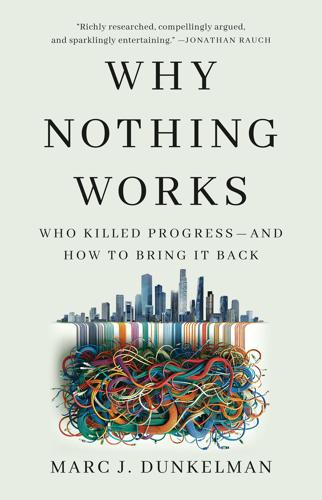
Why Nothing Works: Who Killed Progress--And How to Bring It Back
by
Marc J Dunkelman
Published 17 Feb 2025
“San Antonio Area Freeway System.” “4.5-Mile Section of Texas Freeway Opens After Long and Bitter Fight,” New York Times, February 13, 1978. 31. Kathleen McCormick, “Deconstruction Ahead,” Lincoln Institute of Land Policy, April 14, 2020. 32. Steven Malanga, “The Agenda Behind Buttigieg’s Claim That Highways Are ‘Racist’,” Wall Street Journal, April 19, 2021. Alabama officials chose, for example, to run a highway through Rosa Parks’s home in the 1950s. Ryan Reft, “We Mythologize Highways, but They’ve Damaged Communities of Color,” Washington Post, January 19, 2023. 33. Nate Rawlings, “Joe Biden Says NYC Airport Like ‘Some 3rd-World Country,’” Time, February 7, 2014. 34. Urofsky, Louis D. Brandeis, 181–184. 35. This bureaucracy would later become the Federal Highway Administration. 36.

The Food Revolution: How Your Diet Can Help Save Your Life and Our World
by
John Robbins
Published 14 Sep 2010
During her 738 days and nights in Luna, Julia endured relentless battering from El Nino storms, savage helicopter harassment, and repeated sieges by logging company "security guards"-all while living perched on a tiny and woefully unprotected platform eighteen stories off the ground. Vhhen Julia Butterfly Hill began her famous tree-sit, she was only twenty-three years old. She had no idea she would come to be called the Rosa Parks of the environmental movement. She never expected to be honored as one of Good Housekeeping's "Most Admired Women" and George magazine's "20 Most Interesting Women in Politics," to be featured in People magazine's "25 Most Intriguing People of the Year" issue, or to receive hundreds of letters weekly from young people around the world.
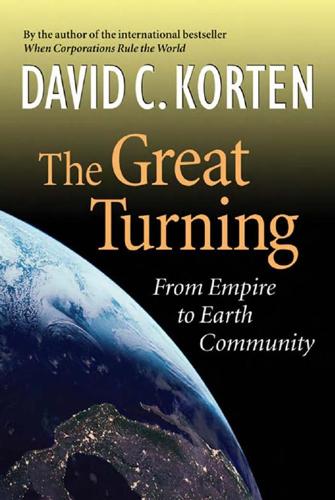
The Great Turning: From Empire to Earth Community
by
David C. Korten
Published 1 Jan 2001
Blatantly unfair sharecropper arrangements forced blacks into debts that became an instrument of bondage only one step removed from an outright return to slavery.4 Oppression and terror prevailed until the civil rights movement of the latter half of the twentieth century achieved an important, but still partial, cultural transformation in race relationships and backed it with legal sanctions against those who overtly denied African Americans their basic civil rights. Securing Civil Rights for People of Color The modern civil rights movement was born in Montgomery, Alabama, when Rosa Parks, a middle-aged African American seamstress and Struggle for Justice 203 longtime activist leader with the National Association for the Advancement of Colored People (NAACP), was arrested on December 1, 1955, for refusing to give up her seat to a white patron. The success of the subsequent bus boycott led by the Reverend Martin Luther King Jr. unleashed a sense of pride and possibility in black communities across the country, inspiring wave after wave of protest — and often deadly white reprisals.
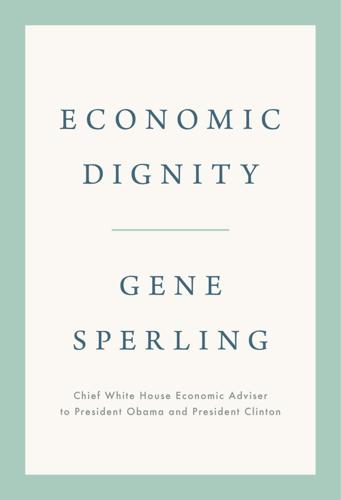
Economic Dignity
by
Gene Sperling
Published 14 Sep 2020
They chose to elevate such unrealized aspirations as a means of both exposing the depth of unfulfilled promises to African Americans and making clear that their demands for racial justice represented not special pleading but a call to make progress toward realizing universal American ideals. As Pauli Murray, the remarkable civil rights pioneer who refused to give up her seat on a public bus in Petersburg, Virginia, fifteen years prior to Rosa Parks,1 wrote in 1945: “As an American I inherit the magnificent tradition of an endless march toward freedom and toward the dignity of all mankind.”2 Calling for economic dignity to be our ultimate end goal for economic policy carries with it the obligation to give a more complete and enduring definition of dignity than is currently used in our economic and political dialogue.

When They Go Low, We Go High: Speeches That Shape the World – and Why We Need Them
by
Philip Collins
Published 4 Oct 2017
He attended segregated schools in Georgia, before following his grandfather and father into the family trade as a pastor of the Ebenezer Baptist Church in Atlanta. After theological college in Pennsylvania, King received a doctorate from Boston University in 1955, in which year he was recruited to serve as spokesman for the Montgomery Bus Boycott, a campaign to force integration on the buses which had been started a year earlier by Rosa Parks. This led, in time, to a Supreme Court judgement that segregation on transport was unconstitutional. Taking up the presidency of the Southern Christian Leadership Conference, a position he held until his death, King became the most important of all the leaders of the civil rights movement. Drawing inspiration from his faith and the teachings of Mahatma Gandhi, Dr King resisted the calls to demand freedom by any means necessary.
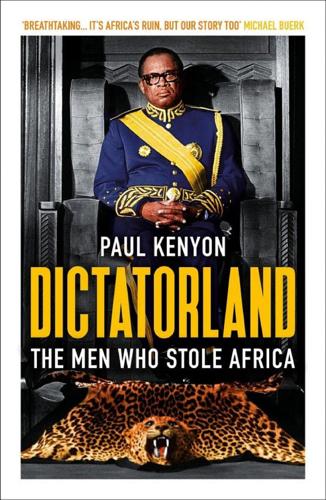
Dictatorland: The Men Who Stole Africa
by
Paul Kenyon
Published 1 Jan 2018
One month after the elections, in February 1956, Houphouet-Boigny was rewarded for his support by being made a government minister. It was an astonishing achievement. Across the Atlantic in the United States, segregation was still very much in place, overtly in the South and more insidiously elsewhere. In Montgomery, Alabama, civil rights activist Rosa Parks had just been arrested for refusing to give up her bus seat to a white passenger, and here was Houphouet-Boigny helping to run a white colonial government. It was the highest office any African had achieved in France and he was still on the rise. He became minister of health, and a member of the French cabinet.

Transcend: The New Science of Self-Actualization
by
Scott Barry Kaufman
Published 6 Apr 2020
Humble: They demonstrate “a sense of realistic humility about one’s own importance relative to the world at large, implying a relative lack of concern for one’s own ego.” Based on expert ratings of influential figures using these criteria, Frimer and his colleagues identified moral exemplars. The list of moral exemplars included Rosa Parks, Shirin Ebadi, Nelson Mandela, Mohandas Gandhi, Aung San Suu Kyi, the Dalai Lama, Martin Luther King Jr., Andrei Sakharov, Emmeline Pankhurst, and Eleanor Roosevelt. These individuals scored high on all five criteria as put forward by Colby and Damon. In contrast were highly influential figures ranging from “tyrants” such as Adolf Hitler and Mao Zedong, who scored low on the principled/virtuous and humble dimensions but neutral on the remainder; to “sectarians” such as Vladmir Putin, Kim Jong Il, Eliot Spitzer, Donald Rumsfeld, and Mel Gibson, who scored low on all five moral dimensions; to “achievers” such as Marilyn Monroe, Bill Belichick, David Beckham, Condoleezza Rice, Hu Jintao, and Arnold Schwarzenegger, who scored close to the neutral point on all moral dimensions.
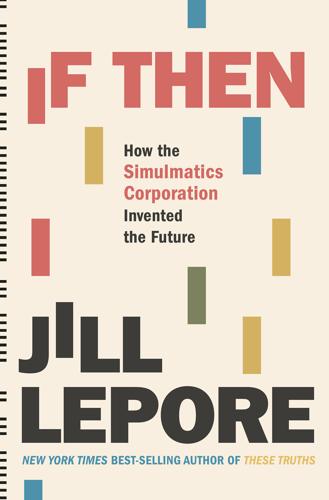
If Then: How Simulmatics Corporation Invented the Future
by
Jill Lepore
Published 14 Sep 2020
During all these years, on the streets of every Jim Crow state in the American South, the people protested, the people marched, the people shouted for freedom, the people cried for justice. On one of the last days of 1955, in Montgomery, Alabama, a forty-two-year-old seamstress and longtime civil rights activist named Rosa Parks refused to give up her seat on a bus to a white man. Martin Luther King Jr., the elegant, twenty-six-year-old pastor of Montgomery’s Dexter Avenue Baptist Church, spoke at a mass meeting four days later, at a Baptist church on Holt Street. Outside of preaching, he’d never before spoken in public.

Fodor's Oregon
by
Fodor's Travel Guides
Published 13 Jun 2023
The daunting task of deadheading all these flowers is covered in classes taught to volunteers. The bandstand is a historic landmark, and the last of its kind in the city. This 16-acre North Portland park also contains an ornate historic fountain, Italian villa–inspired community center, playground, wading pool, tennis and volleyball courts, and picnic tables. E 700 N. Rosa Parks Way, Overlook/Arbor Lodge w penrosefriends.org. HSauvie Island ISLAND | FAMILY | When the weather’s nice, drive about a half hour northwest of Downtown to this largely agrarian 33-square-mile piece of paradise in the Columbia River, containing a wildlife refuge, three beaches (including Collins Beach, which is clothing-optional), superb biking and hiking trails, and several farms offering seasonal “u-pick” bounty (and one, Bella Organic, offering wine tastings and an autumn pumpkin patch and corn maze).

The Quiet Coup: Neoliberalism and the Looting of America
by
Mehrsa Baradaran
Published 7 May 2024
Americans of every race witnessed a moral standoff: Ruby Bridges, the brave Black girl walking into an all-white school, or George Wallace, the red-faced governor of Alabama standing at the schoolhouse door; kneeling marchers versus the clubs wielded by Bull Connor’s police force in Birmingham; the men sitting at a counter and the menace of violence right at their backs; Rosa Parks’s dignity and the routine humiliation of Jim Crow. Yet no sooner had freedom fighters, equal rights marchers, and the newly sovereign former colonies achieved their aims of institutional recognition than the forces of reaction began a stealth campaign to erode the institutions of democracy from the inside.
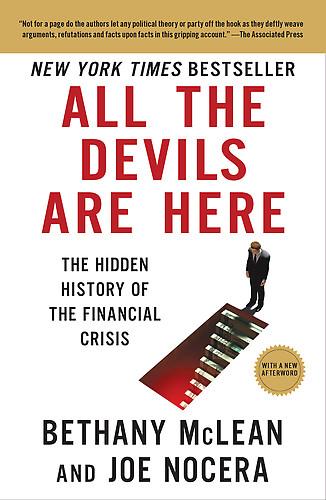
All the Devils Are Here
by
Bethany McLean
Published 19 Oct 2010
Summers brought his two daughters, as one former Treasury executive recalls. Another employee said to them, in an obvious reference to the GSEs, “What would you tell your daddy to do if there are people who are doing a lot of harm, and Daddy could take them on, but they might do Daddy some harm, and nothing he does may do any good?” “Oh, is Daddy like Rosa Parks?” asked one of Summers’s daughters. Finally, on March 22, 2000, assistant Treasury secretary Gary Gensler testified in favor of Baker’s bill on behalf of the administration. Among other things, he said that the U.S. Treasury should consider cutting off the GSEs’ $2.5 billion lines of credit with the federal government.

We the Corporations: How American Businesses Won Their Civil Rights
by
Adam Winkler
Published 27 Feb 2018
Founded in 1909 by famed African American scholar W. E. B. DuBois and others, the NAACP had already made considerable headway by the time of the crackdown. Brown v. Board of Education, decided two years earlier, promised to end segregated public schools. The Montgomery bus boycott of 1955, triggered by longtime NAACP member Rosa Parks’s refusal to move to the back of a city bus, brought widespread condemnation of Jim Crow. Integrationists had gained the political and legal momentum, and reactionaries decided it was time to put the nation’s leading advocate of civil rights out of business.1 Of course, the NAACP was not a business.
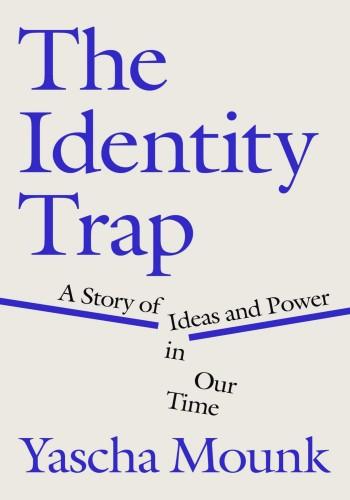
The Identity Trap: A Story of Ideas and Power in Our Time
by
Yascha Mounk
Published 26 Sep 2023
But thankfully, most people have sensible views on complex issues, including those that touch on history and national identity. According to one recent study, for example, the great majority of Americans, including most Republicans, believe that “it’s important that every American student learn about slavery, Jim Crow, and segregation”; “Martin Luther King and Rosa Parks should be taught as examples of Americans who fought for equality”; and “America is better today because women, immigrants, and Black Americans have made progress towards equality.” At the same time, the great majority of Americans, including most Democrats, also believe that “George Washington and Abraham Lincoln should be admired for their roles in American history”; “we don’t need to be ashamed to be American”; and “students should not be made to feel personally responsible for the actions of earlier generations.”

The Gods of New York: Egotists, Idealists, Opportunists, and the Birth of the Modern City: 1986-1990
by
Jonathan Mahler
Published 11 Aug 2025
It was about creating a new movement for Black empowerment whose first target would be a criminal justice system that had consistently failed to provide equal justice to Black New Yorkers. “We have to change the structure of this city, which is fundamentally and essentially racist, and then we can have some harmony,” Mason said, equating their clients’ refusal to cooperate with Rosa Parks’s refusal to give up her bus seat thirty years earlier in Montgomery, Alabama. “ ‘Howard Beach.’ That will be the new rallying cry,” Mason said. “ ‘Remember Howard Beach.’ ” Sharpton, meanwhile, was using the momentum to organize marches and protests around the city. On January 6, more than one thousand people crowded into the auditorium of Boys and Girls High School in Bed-Stuy to hear the three men speak about the case and their new movement.
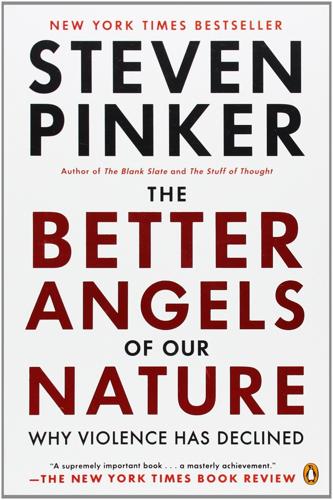
The Better Angels of Our Nature: Why Violence Has Declined
by
Steven Pinker
Published 24 Sep 2012
CIVIL RIGHTS AND THE DECLINE OF LYNCHING AND RACIAL POGROMS When most people think of the American civil rights movement, they recall a twenty-year run of newsworthy events. It began in 1948, when Harry Truman ended segregation in the U.S. armed forces; accelerated through the 1950s, when the Supreme Court banned segregated schools, Rosa Parks was arrested for refusing to give up her bus seat to a white man, and Martin Luther King organized a boycott in response; climaxed in the early 1960s, when two hundred thousand people marched on Washington and heard King give perhaps the greatest speech in history; and culminated with the passage of the Voting Rights Act of 1965 and the Civil Rights Acts of 1964 and 1968.
…
In another conscience-jarring incident, four black girls attending Sunday school were killed in 1963 when a bomb exploded at a Birmingham church that had recently been used for civil rights meetings. That same year the civil rights worker Medgar Evers was murdered by Klansmen, as were James Chaney, Andrew Goodman, and Michael Schwerner the following year. Joining the violence by mobs and terrorists was violence by the government. The noble Rosa Parks and Martin Luther King were thrown into jail, and peaceful marchers were assaulted with fire hoses, dogs, whips, and clubs, all shown on national television. After 1965, opposition to civil rights was moribund, antiblack riots were a distant memory, and terrorism against blacks no longer received support from any significant community.
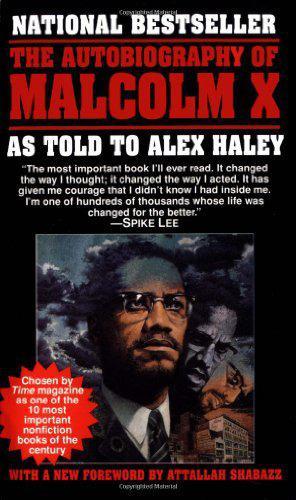
The autobiography of Malcolm X
by
Malcolm X; Alex Haley
Published 15 Aug 1999
Now my feeling was that although the civil rights “leaders” kept attacking us Muslims, still they were black people, still they were our own kind, and Iwould be most foolish to let the white man maneuver me against the civil rights movement. When I was asked about the Montgomery boycott, I'd carefully review what led up to it. Mrs. Rosa Parks was riding home on a bus and at some bus stop the white cracker bus driver ordered Mrs. Parks to get up and give her seat to some white passenger who had just got on the bus. I'd say, “Now, just _imagine_ that! This good, hard-working, Christian-believing black woman, she's paid her money, she's in her seat.

The Pot Book: A Complete Guide to Cannabis
by
Julie Holland
Published 22 Sep 2010
This time, a NIDA/Public Health Service (PHS) review committee refused to provide the marijuana, and the study did not go forward. After having two studies approved by FDA but blocked by NIDA’s refusal to provide the marijuana, I realized that ending the NIDA monopoly on the supply of marijuana was the key step to opening the door to privately funded medical marijuana development. I searched for a year for the Rosa Parks of the medical marijuana production effort and found Dr. Lyle Craker, director of the Medicinal Plant Program at the University of Massachusetts at Amherst. Dr. Craker applied to the DEA in 2001 for a license to establish a MAPS-sponsored production facility. The DEA did its best to delay the process, “losing” the application for six months and then refusing to respond for over three years until we sued the DEA for unreasonable delay under the Administrative Procedures Act.
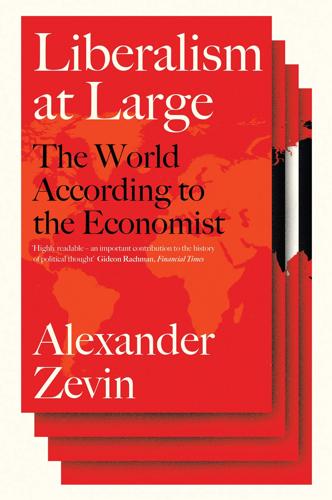
Liberalism at Large: The World According to the Economist
by
Alex Zevin
Published 12 Nov 2019
‘His temperament was rather more conservative than I had supposed.’ Kyle was less impressed by other aspects of life in America. Washington, with its unrepresented black majority, was ‘run like a colony, and a fairly primitive one’. In reporting on desegregation and the bus boycott in Montgomery, Alabama, he was far more impressed by the courage of Rosa Parks and Martin Luther King Jr. than the white officials he met – just as in India. McCarthyism was most disturbing of all. Kyle recalled a cocktail party where the Economist was attacked as everything the senator from Wisconsin was against; on his side there was little but contempt for the ‘most notorious abuser of human rights in the name of anti-Communism’.124 While none of this made Kyle an opponent of American foreign policy, it did place him at odds with a relay of rightwing editors in London that Crowther began to appoint at the same time, the first of whom was a shadowy young Australian named Brian Crozier.

Thinking Without a Banister: Essays in Understanding, 1953-1975
by
Hannah Arendt
Published 6 Mar 2018
As president of the University of Chicago for twenty-two years, where his influence could hardly have been greater or longer lasting, he once said: “The purpose of a university is nothing less than to procure a moral, intellectual, and spiritual revolution throughout the world.” No wonder he and Hannah Arendt became friends. Robert M. Hutchins founded the Fund for the Republic in 1952. —Ed. *2 For example, the Rosa Parks incident in Montgomery, Alabama, in 1955 marked a new beginning of the Civil Rights movement in America. —Ed. *3 Presumably Arendt refers to the Ninth Amendment. —Ed. *4 Herbert Brownell, Jr., U.S. Attorney General (1953–57). —Ed. *5 Joseph McCarthy, U.S. senator from Wisconsin (1947–57), a demogogic anticommunist.
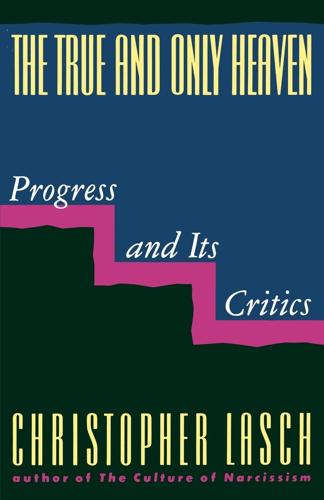
The True and Only Heaven: Progress and Its Critics
by
Christopher Lasch
Published 16 Sep 1991
Under a Montgomery city ordinance, no black person could sit parallel with a white. When all the front rows were filled, black people sitting in the next row were required to vacate all four seats if a single white passenger boarded the bus. They were required to stand even if three of the four seats in that row remained vacant. This was the situation when Rosa Parks, unlike the other three black passengers in her row, refused to stand and went to jail instead. The Montgomery Improvement Association—forerunner of the SCLC—proposed a change in the city law that would "make it possible for Negroes to sit from back toward front, and whites from front toward back until all seats are taken."
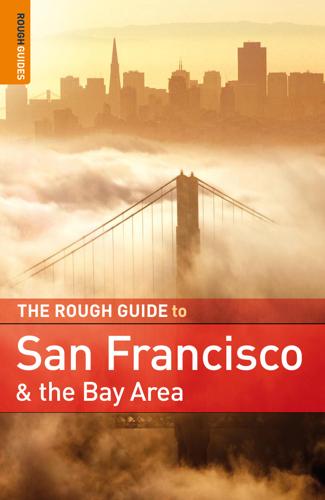
Rough Guide to San Francisco and the Bay Area
by
Nick Edwards
and
Mark Ellwood
Published 2 Jan 2009
Newsom’s official explanation for his promoting gay marriage is anecdotal: on a visit to Washington DC, having heard President Bush refer briefly to the sanctity of marriage in a speech, Newsom was shocked afterwards to overhear derogatory comments about gay marriage from the wife of another prominent Republican. From that point onward, the mayor claims he knew it was a cause he should champion, often likening the civil disobedience of issuing marriage licenses to the bus-based rebellion of Rosa Parks. However, cynics saw Newsom’s position as an opportunistic one: gay marriage was a mediagenic, controversial topic that propelled him from regional mayor to national headliner. Other one-time supporters claimed that his aggressive stance on gay marriage was counterproductive, as not only did eleven states pass anti gay-marriage legislation in November 2004 elections, but the controversy buoyed additional support from the evangelical right for George W.

Cadillac Desert
by
Marc Reisner
Published 1 Jan 1986
There has been no NAWAPA-scale apotheosis; it’s hardly mentioned anymore. The dam-building machine didn’t even coast down like a turbine going off-peak. It just suddenly fell apart. So many factors have played a role that it’s hard to judge which mattered most. You have to give some credit to Mark Dubois: Like Rosa Parks climbing defiantly aboard her segregated bus, he started something that couldn’t be quelled. Millions of people who had never seen the Stanislaus River found themselves feeling upset, if not infuriated, over its loss. Among environmentalists, “Remember the Stanislaus” is what “Stay the Course” was to the Reagan faithful.

A People's History of the United States
by
Howard Zinn
Published 2 Jan 1977
For such a people, with such a memory, and such daily recapitulation of history, revolt was always minutes away, in a timing mechanism which no one had set, but which might go off with some unpredictable set of events. Those events came, at the end of 1955, in the capital city of Alabama—Montgomery. Three months after her arrest, Mrs. Rosa Parks, a forty-three-year-old seamstress, explained why she refused to obey the Montgomery law providing for segregation on city buses, why she decided to sit down in the “white” section of the bus: Well, in the first place, I had been working all day on the job. I was quite tired after spending a full day working.

Strategy: A History
by
Lawrence Freedman
Published 31 Oct 2013
As new challenges arose, the segregationists were in a determined mood. The main black organization—the NAACP—was based in the North, lacked a mass organization, and was barred from operating in some southern states on grounds of subversion. Nonetheless, in November 1955, it was the secretary of the local branch of the NAACP, Rosa Parks, who refused to give up her seat to a white man on a bus in Montgomery, Alabama, and was arrested. This was a moment for which local activists had prepared: soon Montgomery’s buses were being boycotted. This was “no bolt from the blue,”20 and the effects were as anticipated. A crisis was created for the bus company, which depended on blacks for up to three-quarters of its customers.

Costa Rica
by
Matthew Firestone
,
Carolina Miranda
and
César G. Soriano
Published 2 Jan 2008
CACAO BIOLOGICAL STATION High on the slopes of Volcán Cacao (about 1060m), this station offers access to rough trails that lead to the summit of the volcano and to Maritza Biological Station. Cacao Biological Station is reached from the southern side of the park. At Potrerillos, about 9km south of the Santa Rosa park entrance on the Interamericana, head east for 7km on a paved road to the small community of Quebrada Grande (marked ‘Garcia Flamenco’ on many maps). A daily bus leaves Liberia at 3pm for Quebrada Grande. From the village plaza, a 4WD road that is often impassable during the wet season heads north toward the station, about 10km away.
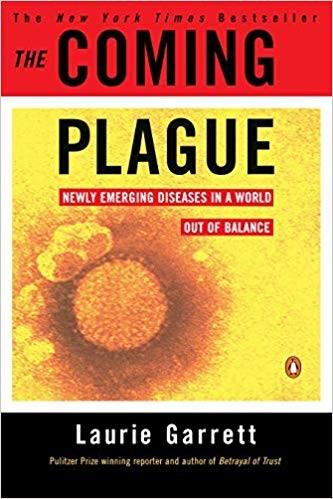
The Coming Plague: Newly Emerging Diseases in a World Out of Balance
by
Laurie Garrett
Published 31 Oct 1994
Milk’s murder placed the political fate of the gay rights movement in the United States solidly in the ranks of other civil rights movements. If African-Americans resented analogies between their civil rights struggles and those of homosexuals—and there were strong protests over comparisons drawn between Martin Luther King, Jr., and Harvey Milk, or between the Stonewall riot and Rosa Parks’s refusal to sit at the back of segregated buses—the sentiment had little impact on the youthful exuberance of gay activists. A party atmosphere pervaded the gay communities of San Francisco, New York, and, to a lesser degree, Montreal, Los Angeles, Washington, D.C., Paris, London, Berlin, and Amsterdam in the late 1970s.
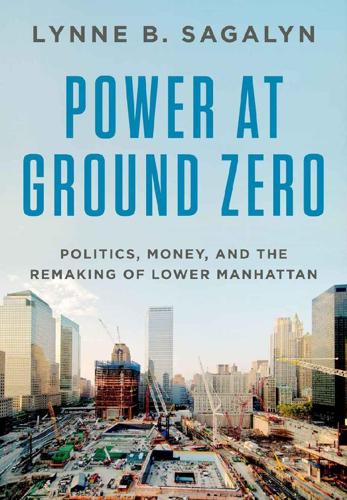
Power at Ground Zero: Politics, Money, and the Remaking of Lower Manhattan
by
Lynne B. Sagalyn
Published 8 Sep 2016
Russell, “Who Owns Grief,” Architectural Review, July 2002, 120−123; Linenthal, The Unfinished Bombing, 181. 7 Smith, “Hallowed Ground Zero.” 8 Anita Contini author interview, April 11, 2012; Julia Levy, “Contini on Contini—Weighing Culture and Memory,” NYS, January 27, 2003; Robin Finn, “Public Lives: A Delicate Challenge for the ‘Voice of Organization,’ ” NYT, August 23, 2002. 9 Contini author interview. 10 The memorials visited included Tompkins Square Park memorial to the victims of the 1891 General Slocum steamboat disaster in the East River in which an estimated 1,021 people on board died; the Prison Ships Martyrs Monument in Brooklyn’s Fort Greene Park commemorating the more than 11,500 men and women held captive by the British during the country’s 1776 Revolution who died on ships anchored in the East River; and the Maine Monument at the entrance to Central Park in Manhattan, commemorating the 260 American sailors who died when their battleship exploded in the harbor of Havana, Cuba, in 1898. 11 Paul Goldberger, Up from Zero: Politics, Architecture, and the Rebuilding of New York (New York: Random House, 2004), 213–214. 12 The sites visited included Shanksville Flight 93 impact site and temporary memorial, the Pentagon outdoor and indoor memorials, Vietnam Veterans Memorial, Lincoln Memorial, Jefferson Memorial, World War II Memorial (under construction), Korean War Memorial, National Law Enforcement Memorial, Japanese American Internment Memorial, John F. Kennedy Memorial, Pentagon Memorial and Grave Site, Tombs of the Unknown Soldiers, Franklin Delano Roosevelt Memorial, Marine Corps (Iwo Jima) Memorial, Arlington National Cemetery, U.S. Holocaust Memorial Museum, Oklahoma City National Memorial, Civil Rights Memorial, and Rosa Parks Museum. 13 LMDC, “Memorial Research Tour, October 1–5, 2002, Summary and General Observations,” n.d. [October 2002], PowerPoint slides available at renewnyc.com/The Plan/memorial.asp. 14 Goldberger, Up from Zero, 216. 15 The ten members of the Mission Statement Drafting Committee included Kathy Ashton, Lt.
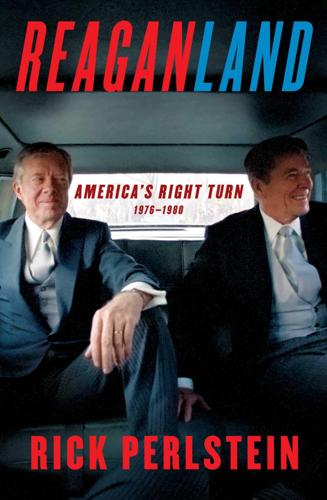
Reaganland: America's Right Turn 1976-1980
by
Rick Perlstein
Published 17 Aug 2020
So I brought tonight a big button that says, ‘Justice through Jobs, Pass Humphrey-Hawkins.’ ” Which delighted the crowd yet more. He rolled on, call-and-response style. (“Can we afford to be satisfied when we’ve got hundreds of thousands of young black men walking the streets looking for jobs?” “Noooo!!”) He called up to the stage “the mother of the movement,” Rosa Parks; then his United Nations ambassador, a former Congressional Black Caucus stalwart, Andrew Young—“a man who is not afraid to speak out when he sees something wrong.… As long as I am president, and Andy Young is willing to stay there, he’ll be UN ambassador”—which brought eight thousand people to their feet.

Lonely Planet Mexico
by
John Noble
,
Kate Armstrong
,
Greg Benchwick
,
Nate Cavalieri
,
Gregor Clark
,
John Hecht
,
Beth Kohn
,
Emily Matchar
,
Freda Moon
and
Ellee Thalheimer
Published 2 Jan 1992
Zona Rosa & Around Guadalajara’s Zona Rosa encompasses the few blocks around Avenida Chapultepec north and south of Avenida Vallarta. It’s home to some of the city’s best cuisine. To get here, catch the westbound Par Vial 400 or 500 bus from Avenidas Independencia and Alcalde. Taxis should cost around M$40. Tacos Don Luis (Map; cnr Calles Chapultepec & Mexicaltzingo; tacos M$7; 8pm-4am) At night this Zona Rosa parking lot overflows with hungry club-goers, who crouch on the curb with plastic plates trying not to spill taco fillings on their party dresses and fancy shoes. There are various food stalls, but Don Luis is the oldest and the best. Tortas Ahogadas Cesár (Map; López Cotilla 1449; tortas M$25) This bare-bones café traffics in one thing and one thing only: tortas ahogadas, Guadalajara’s beloved hangover cure.